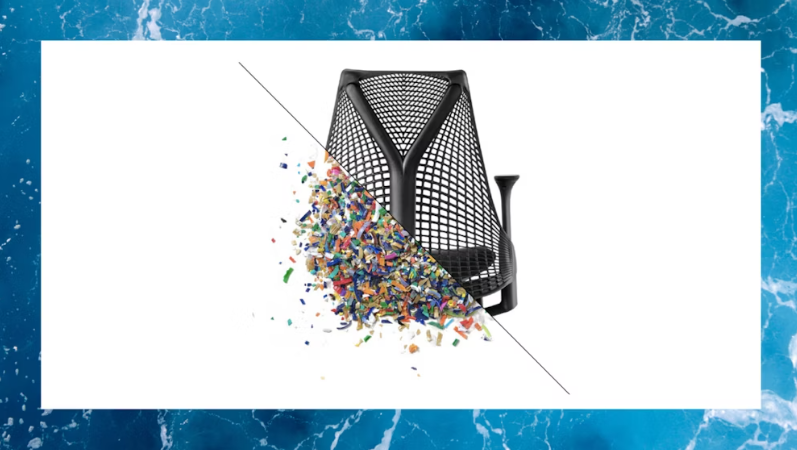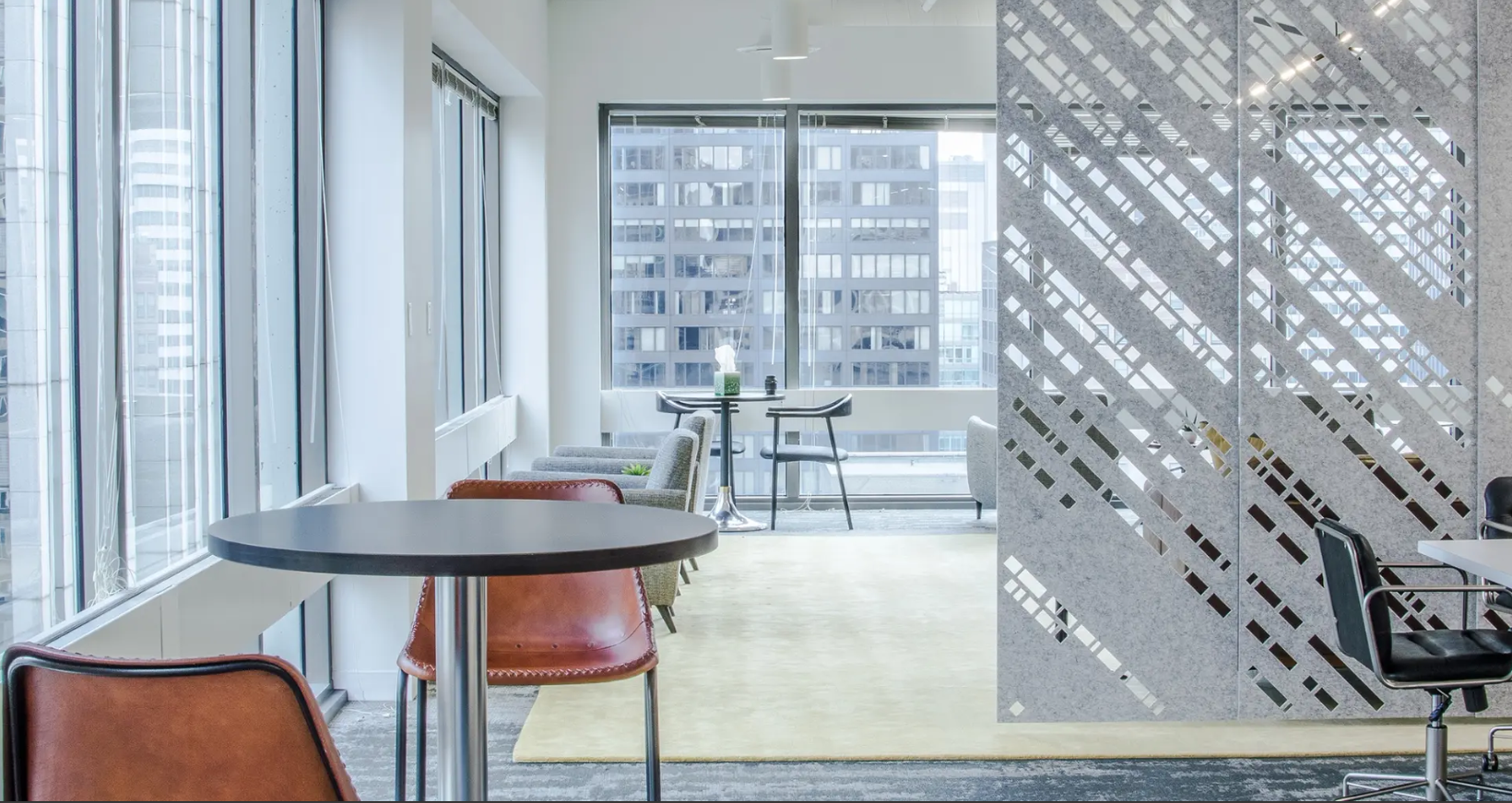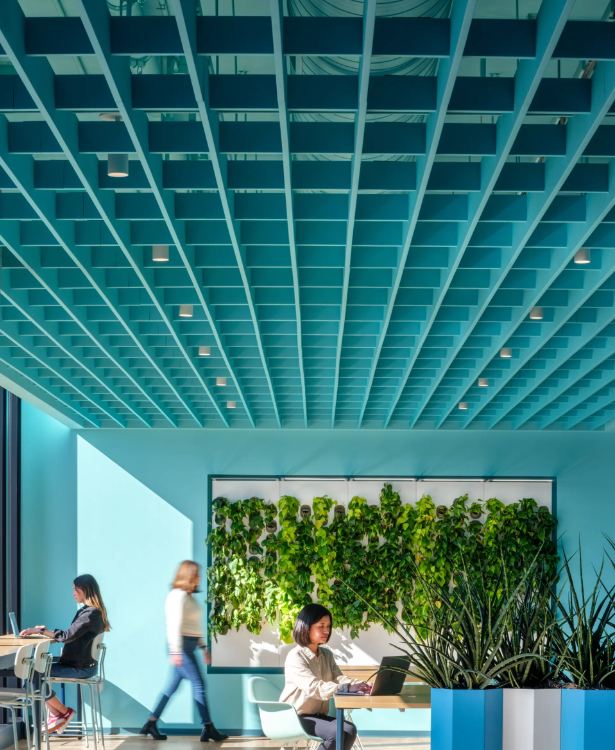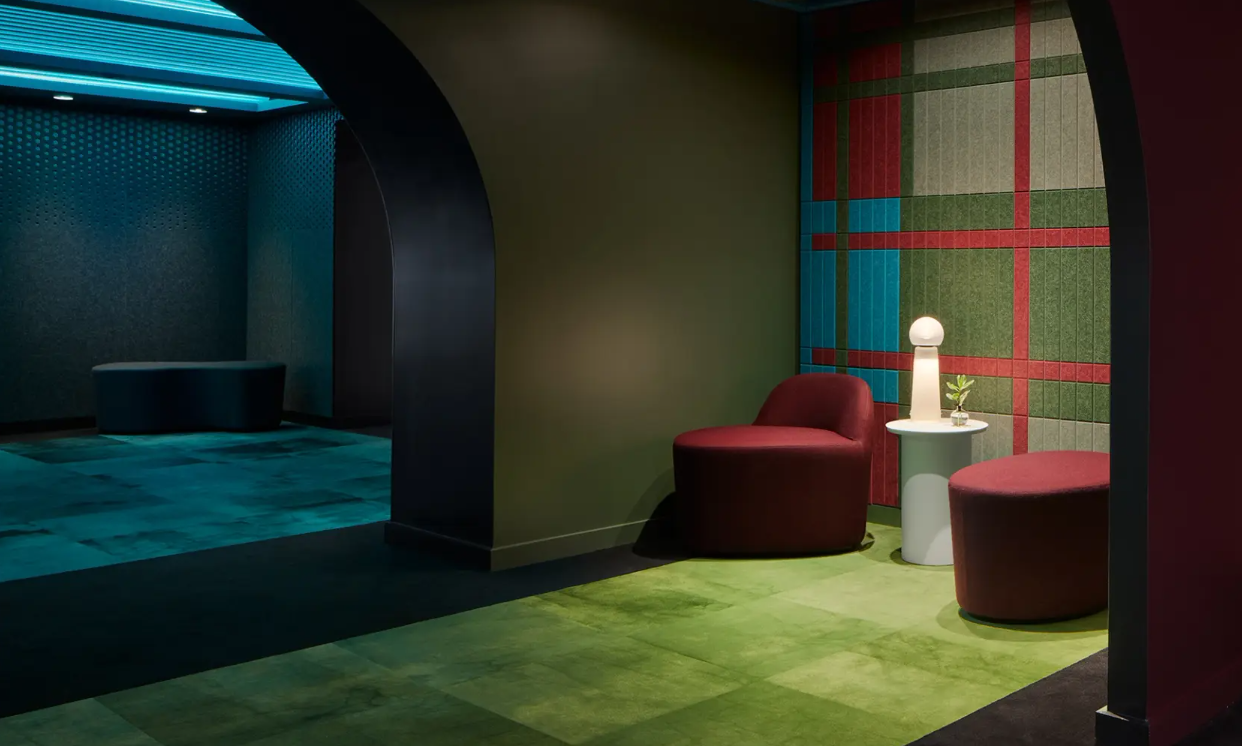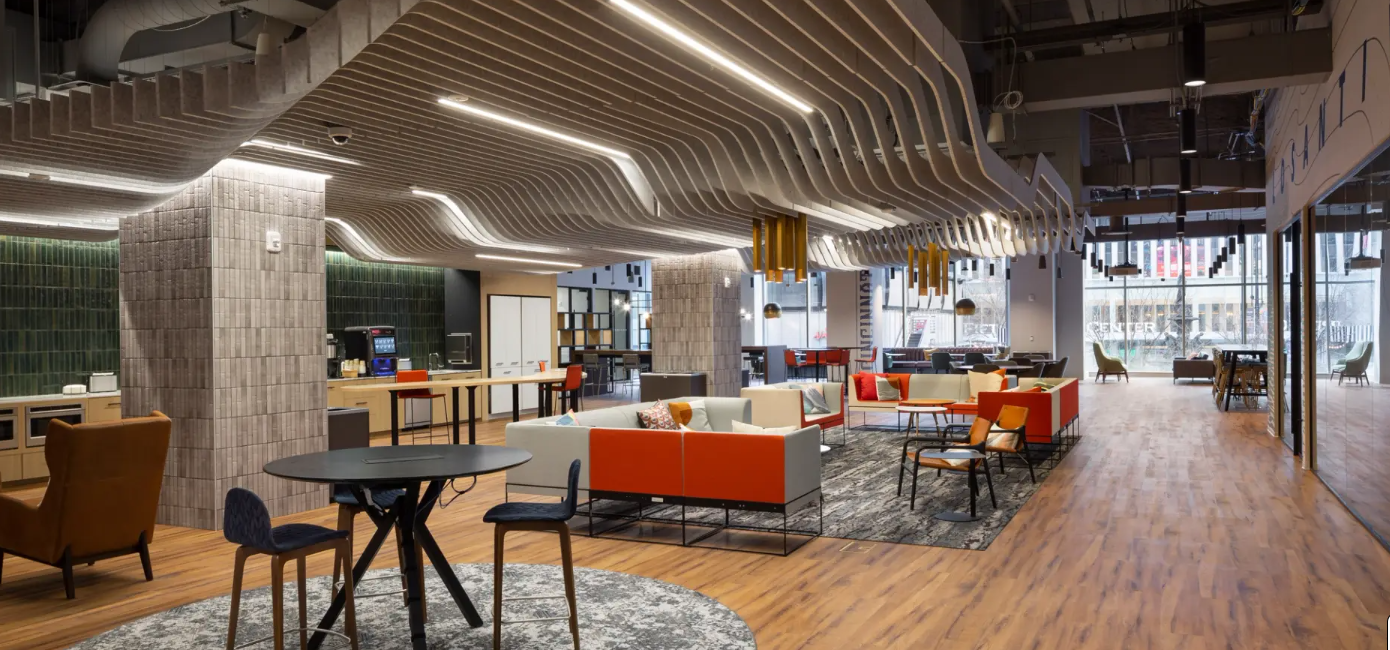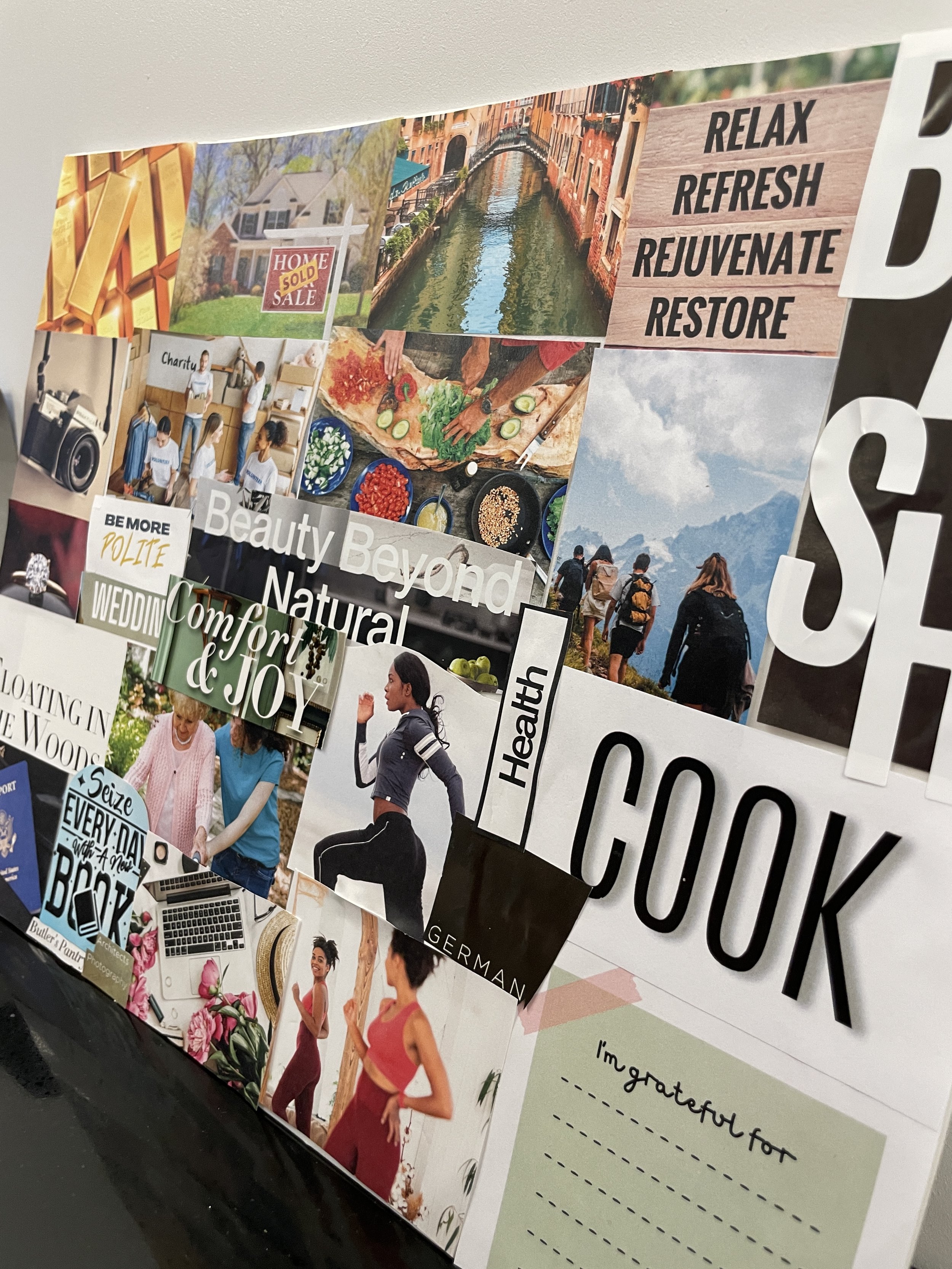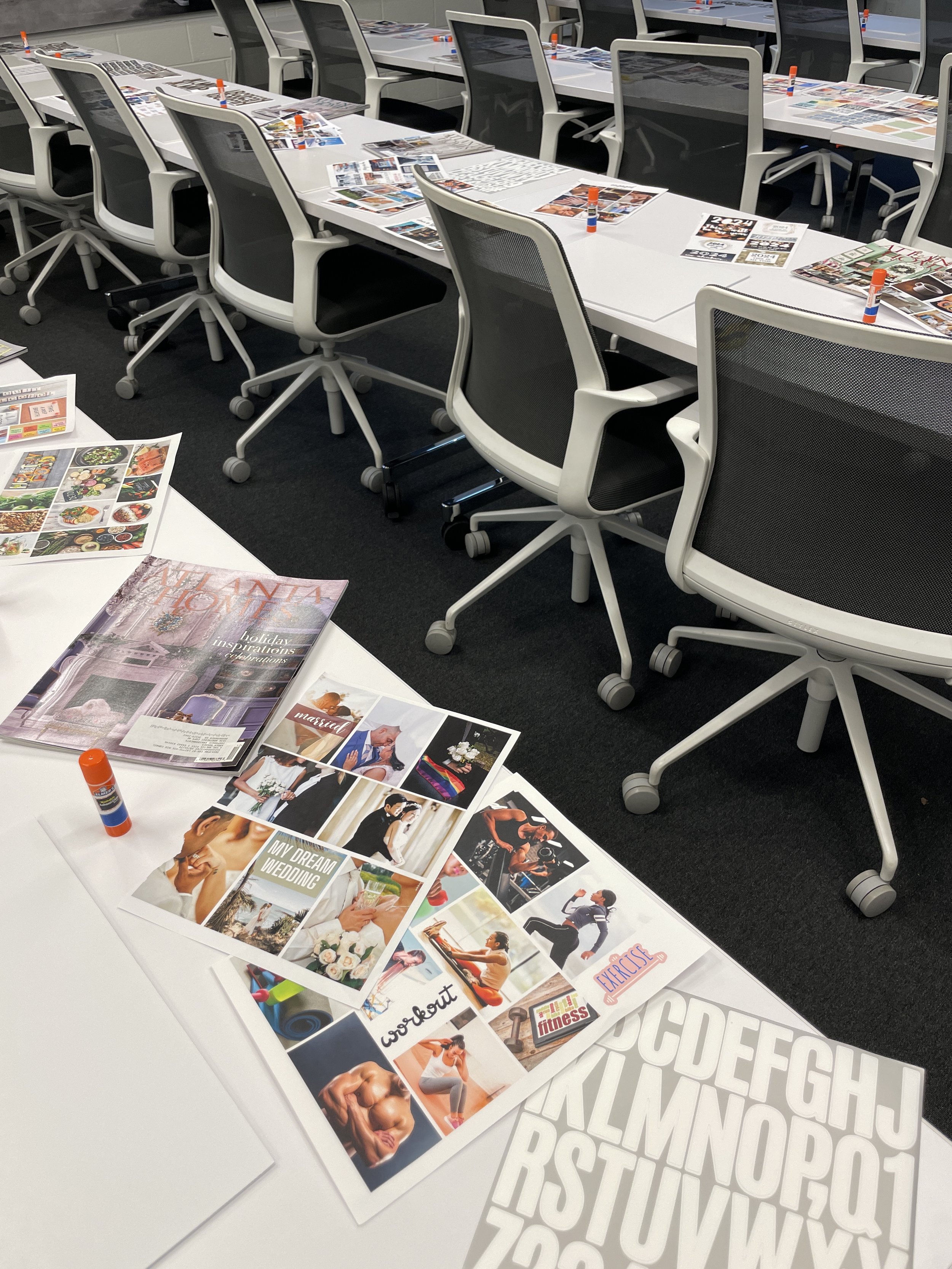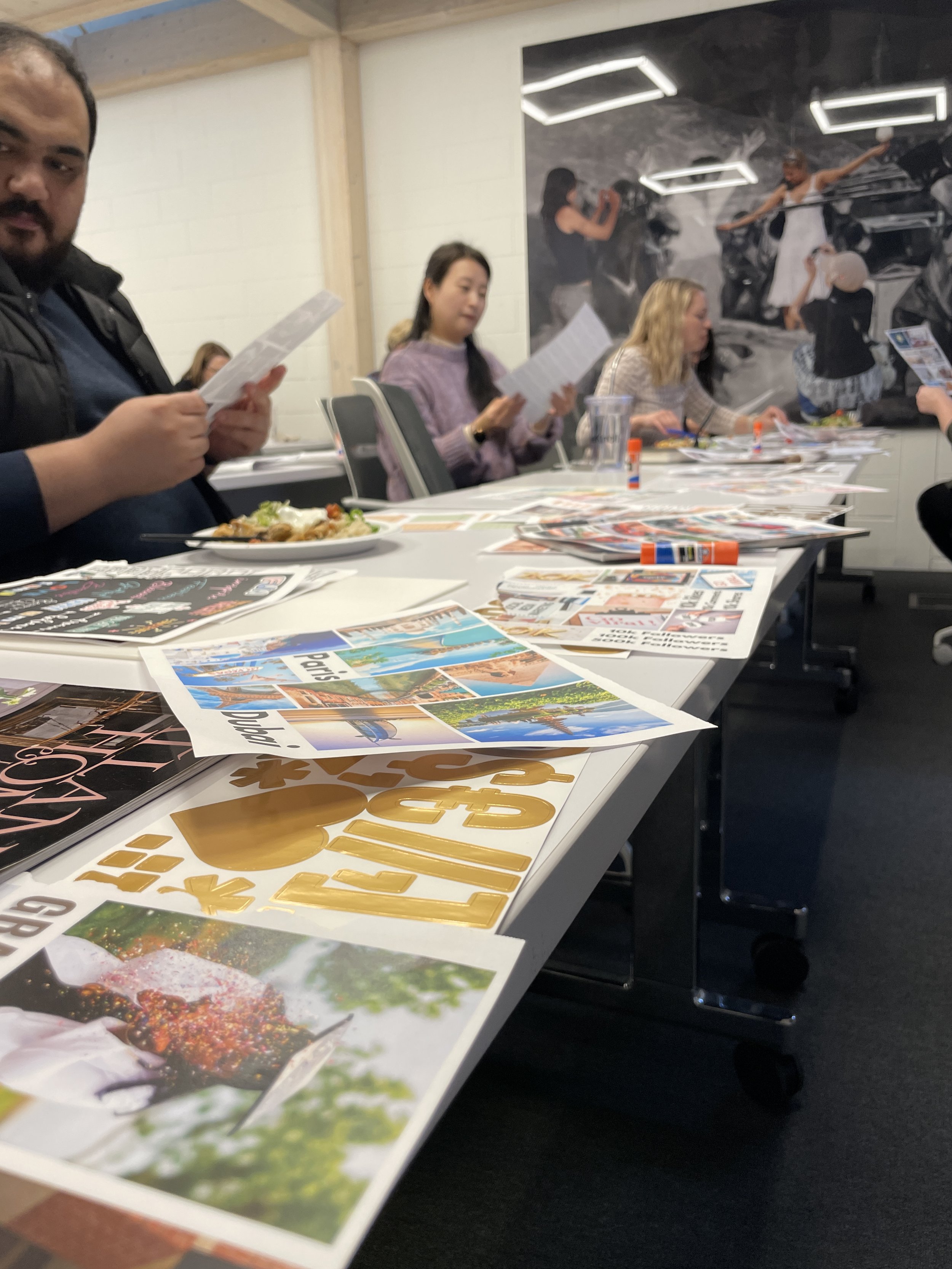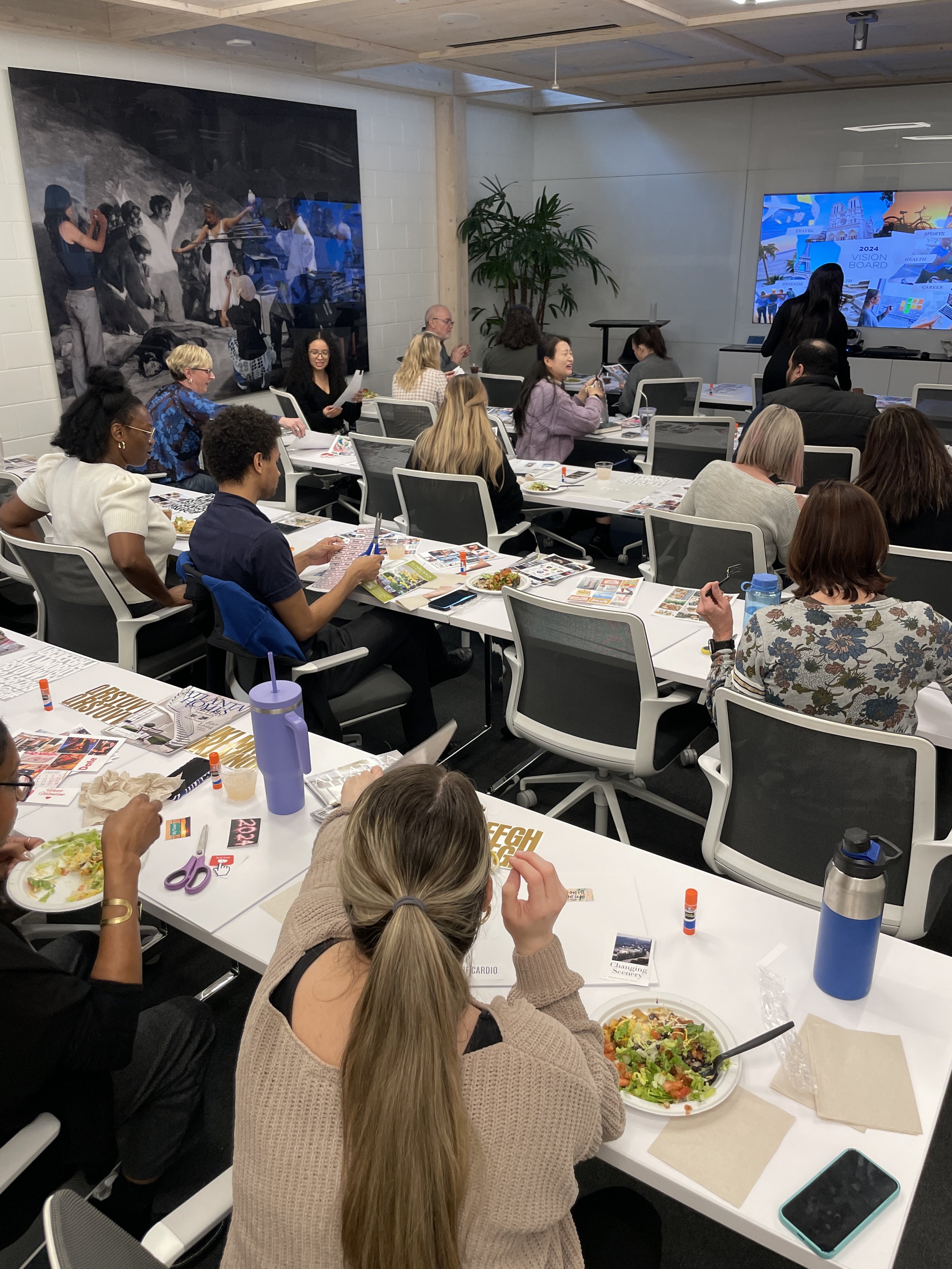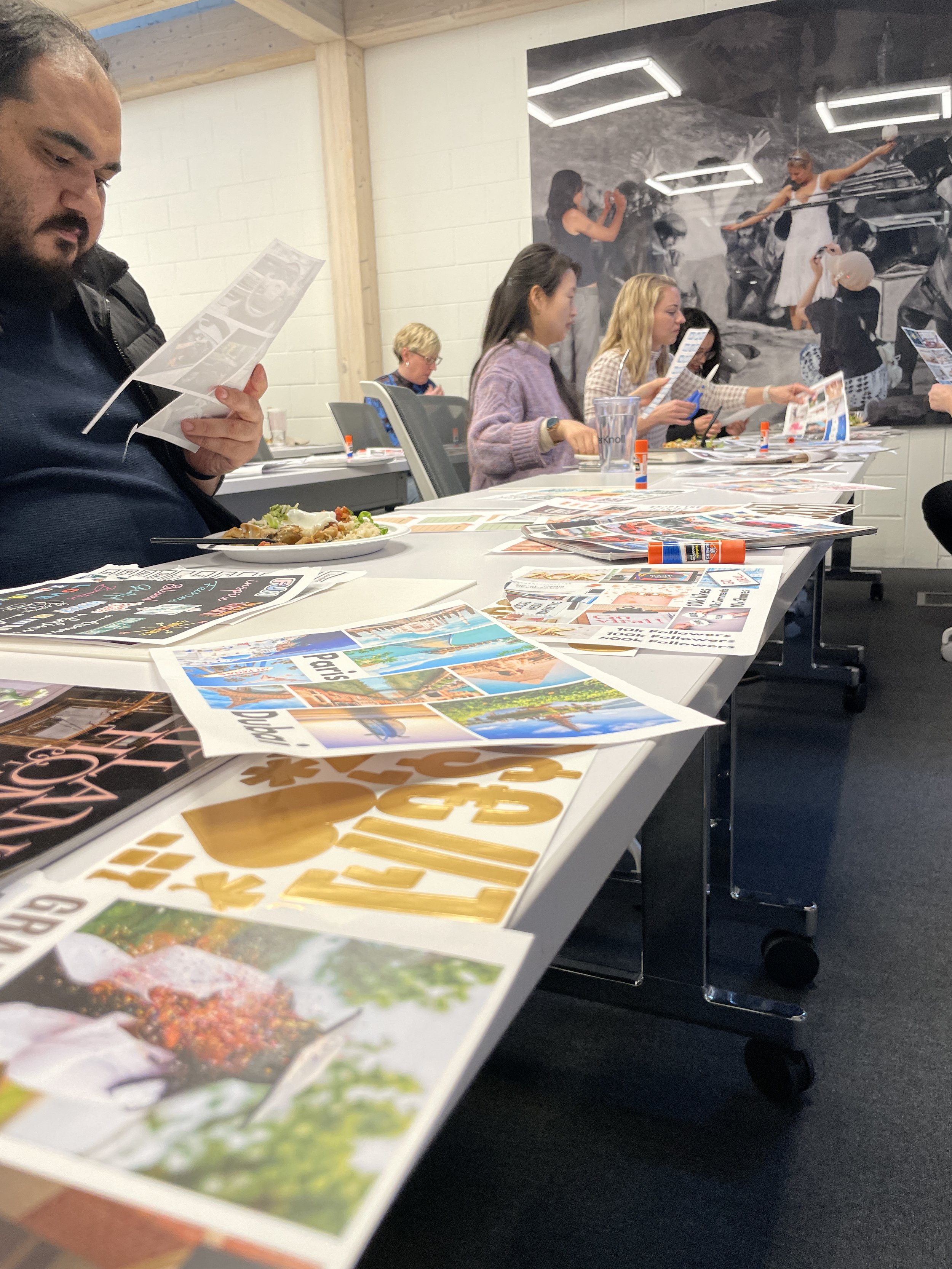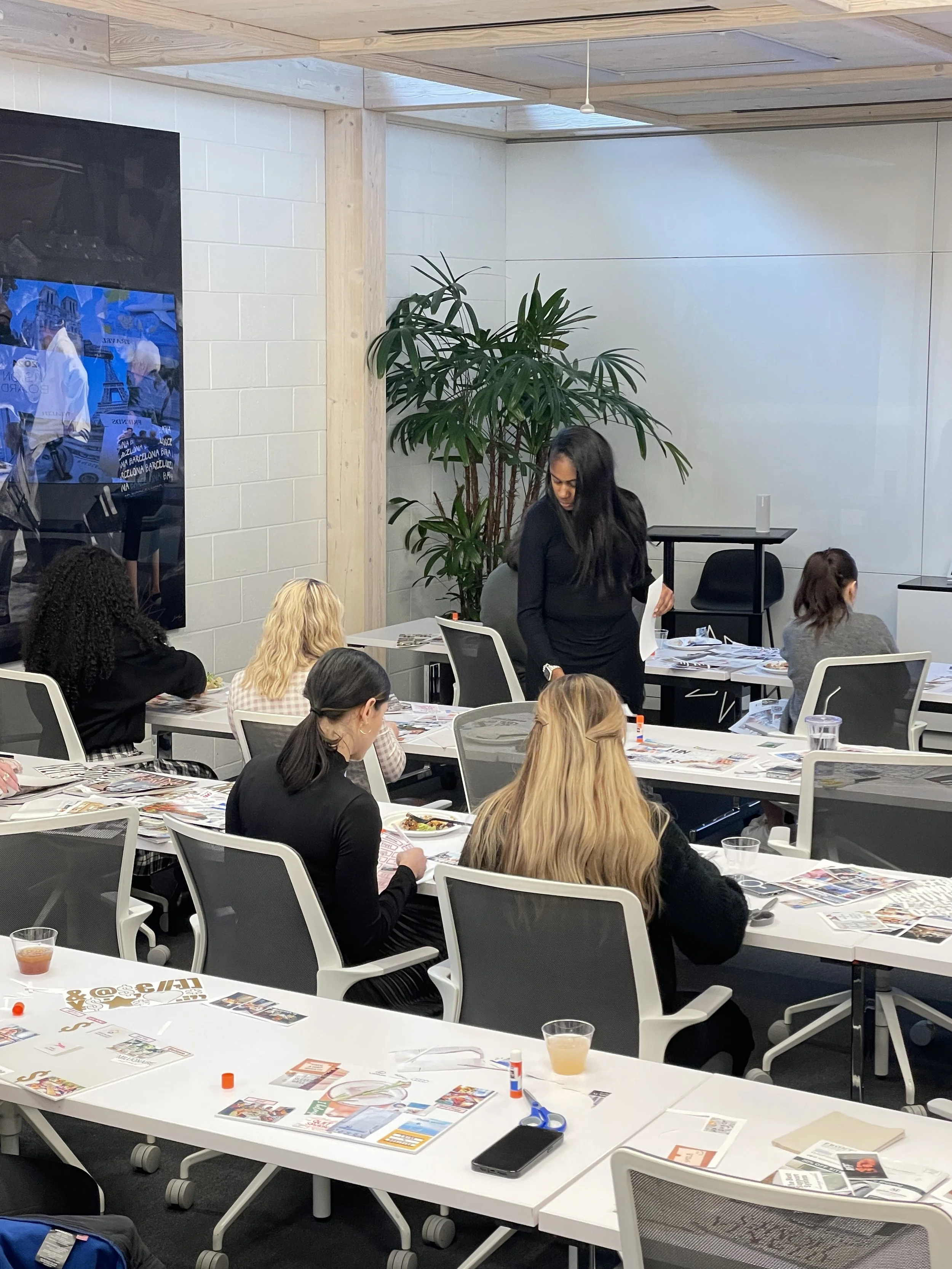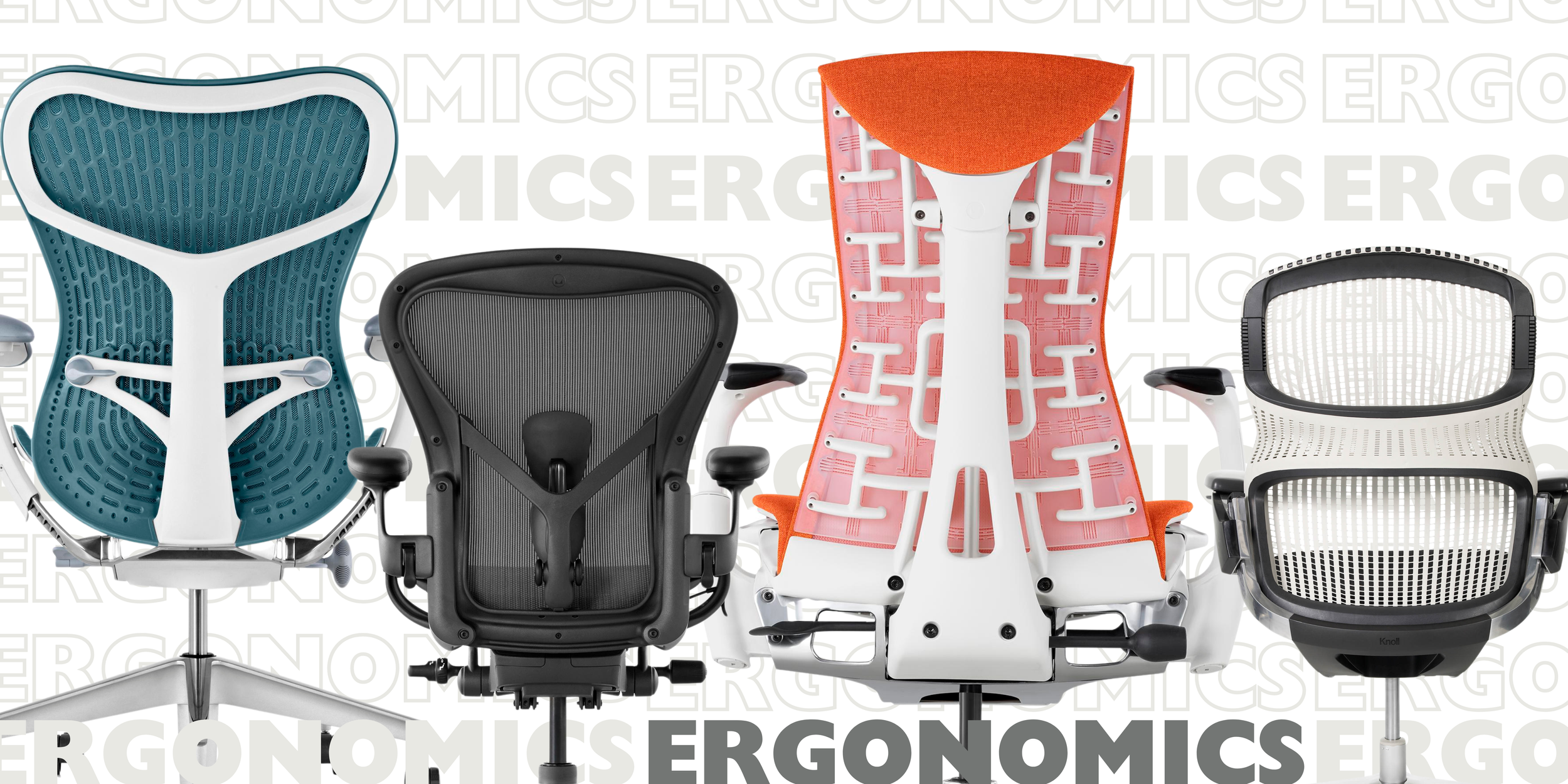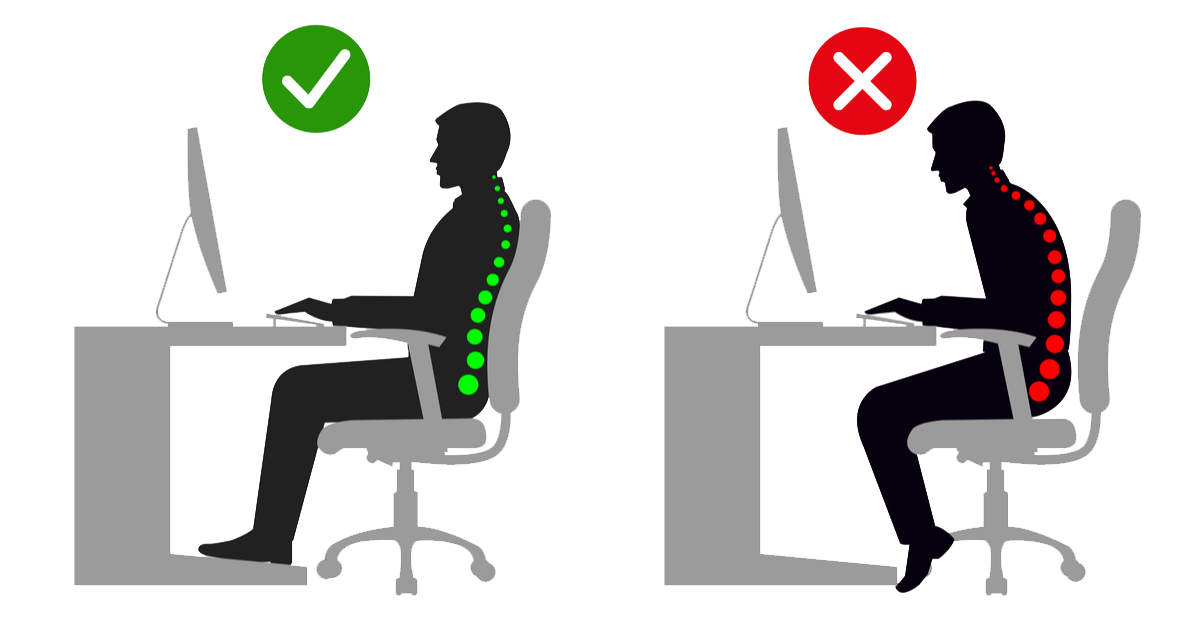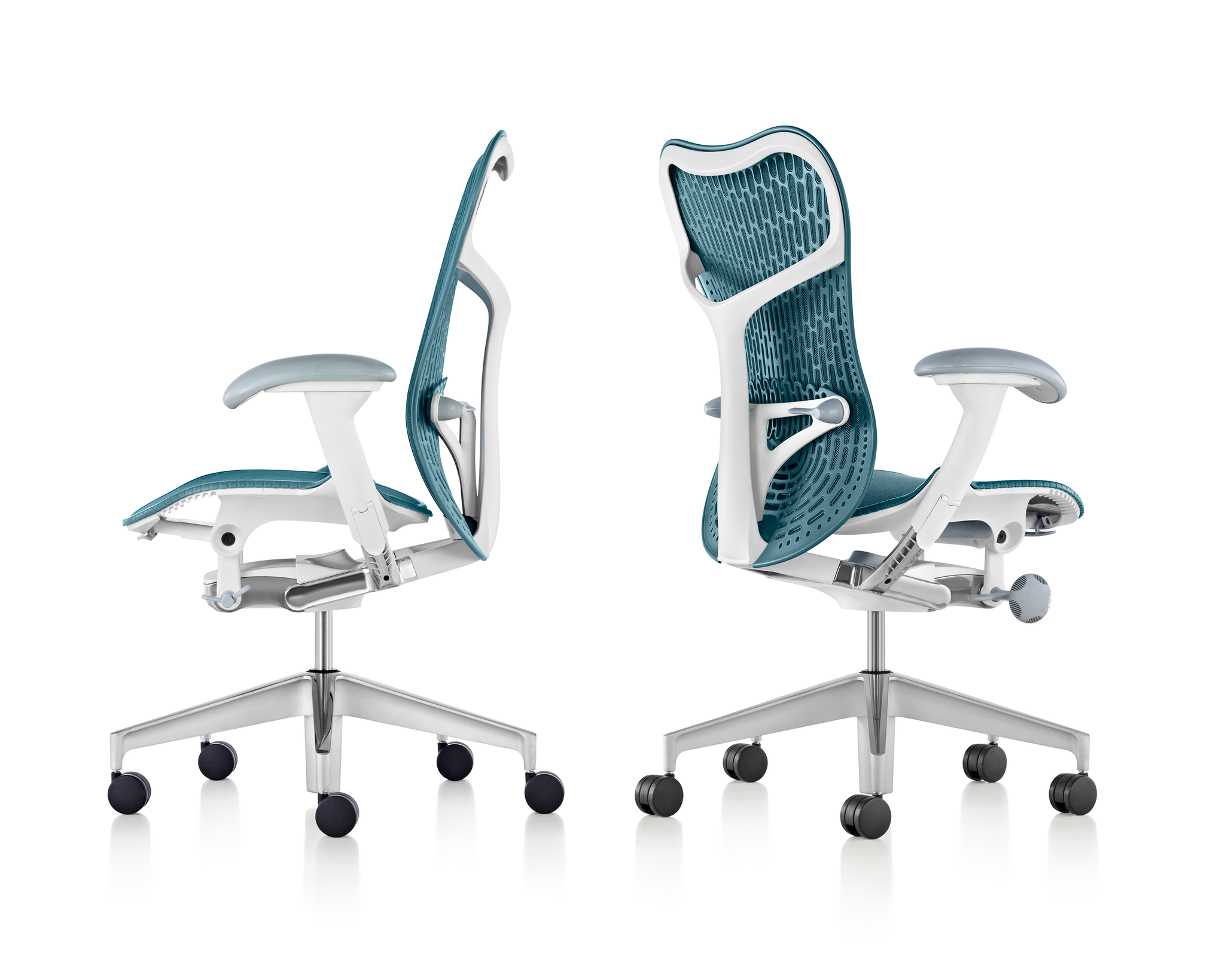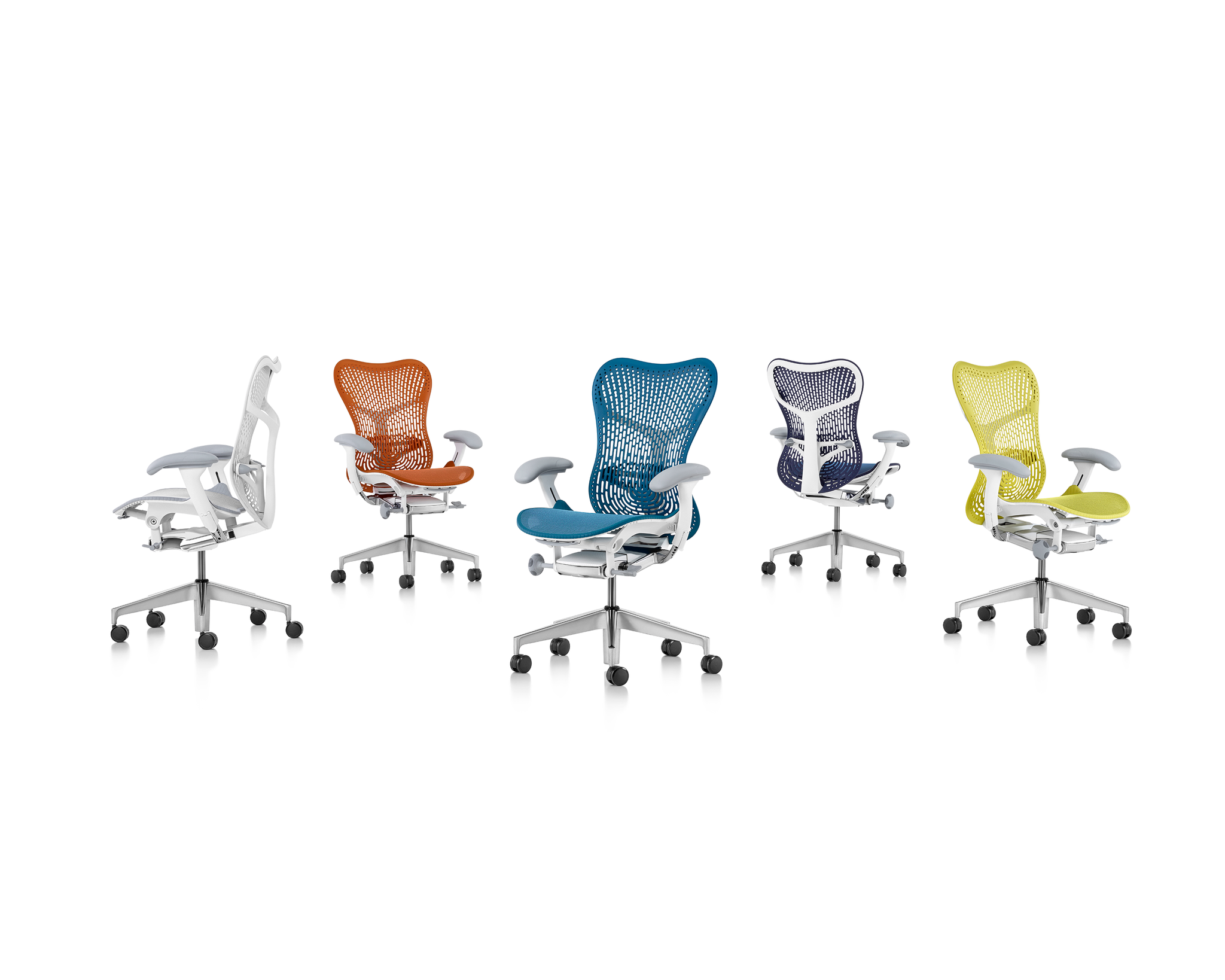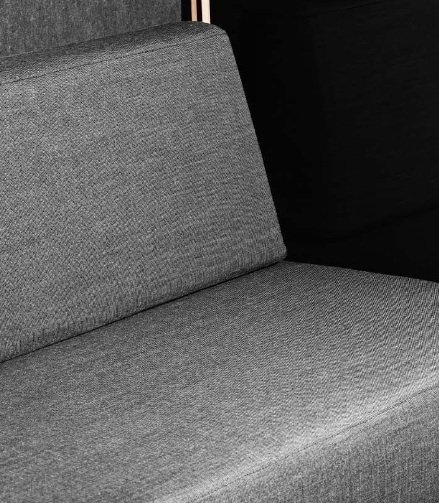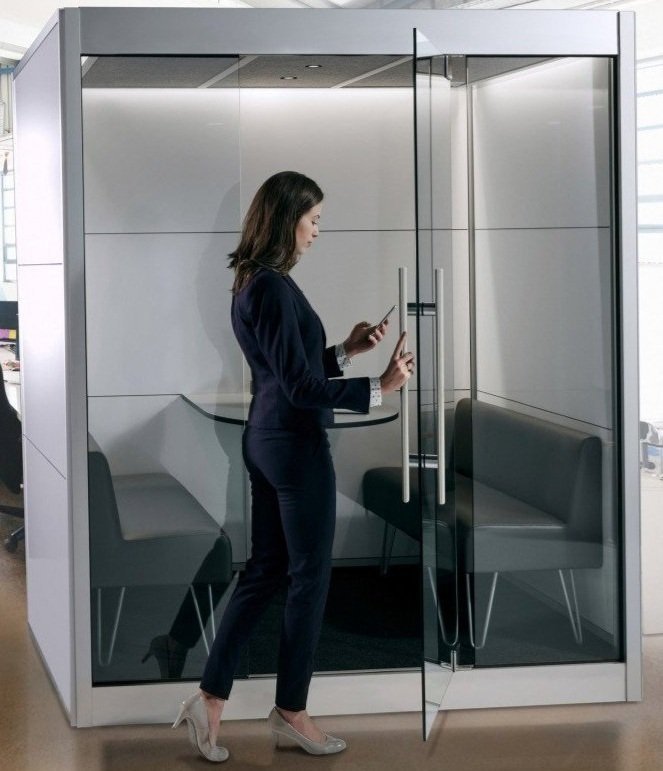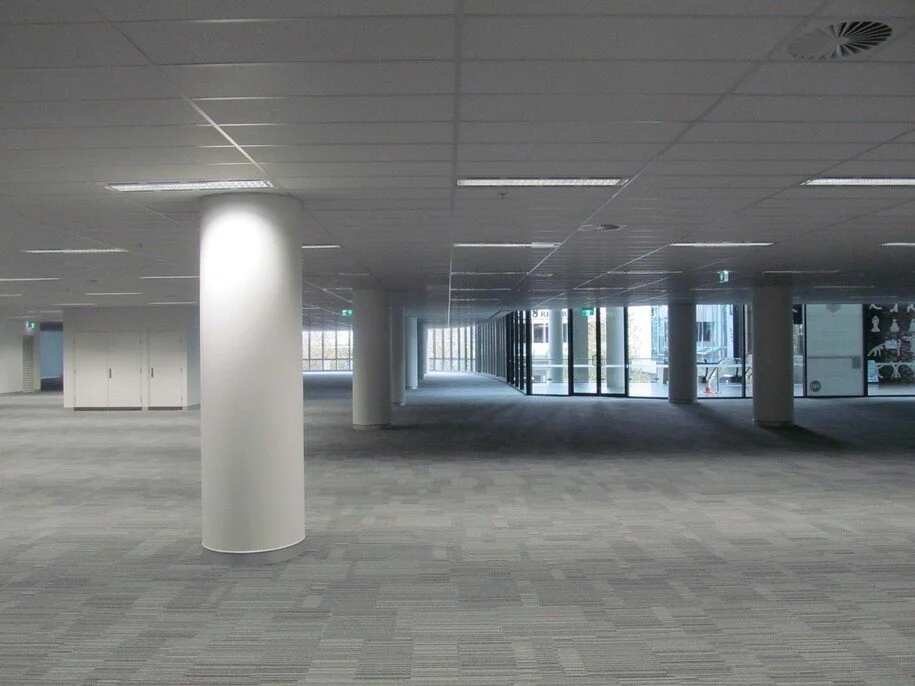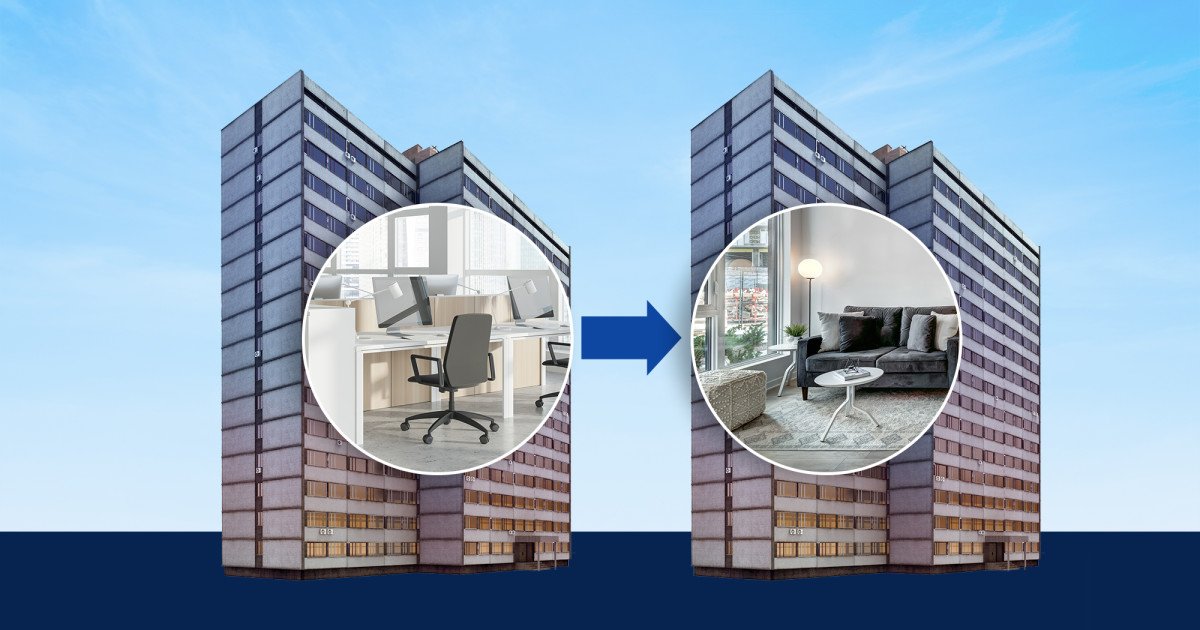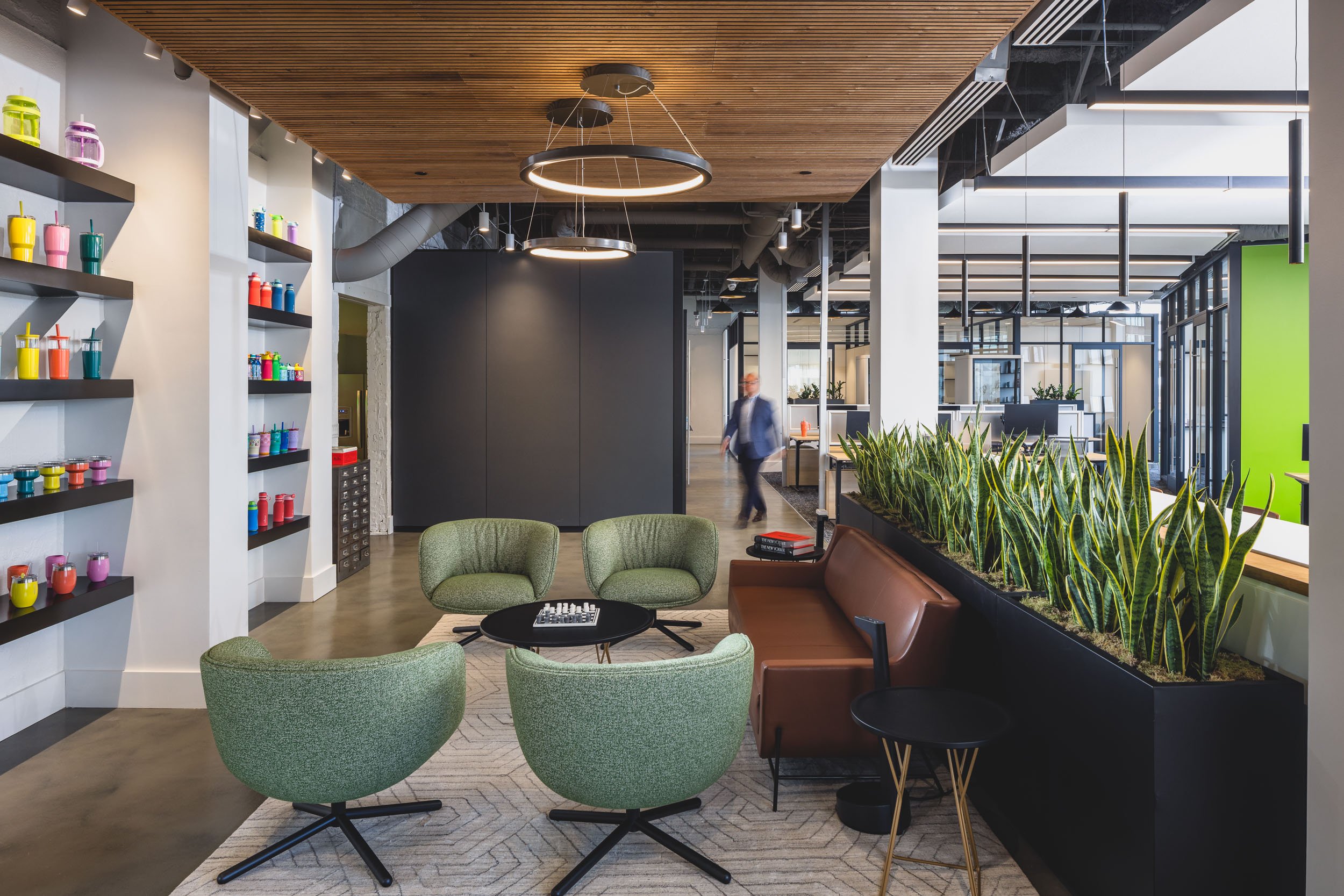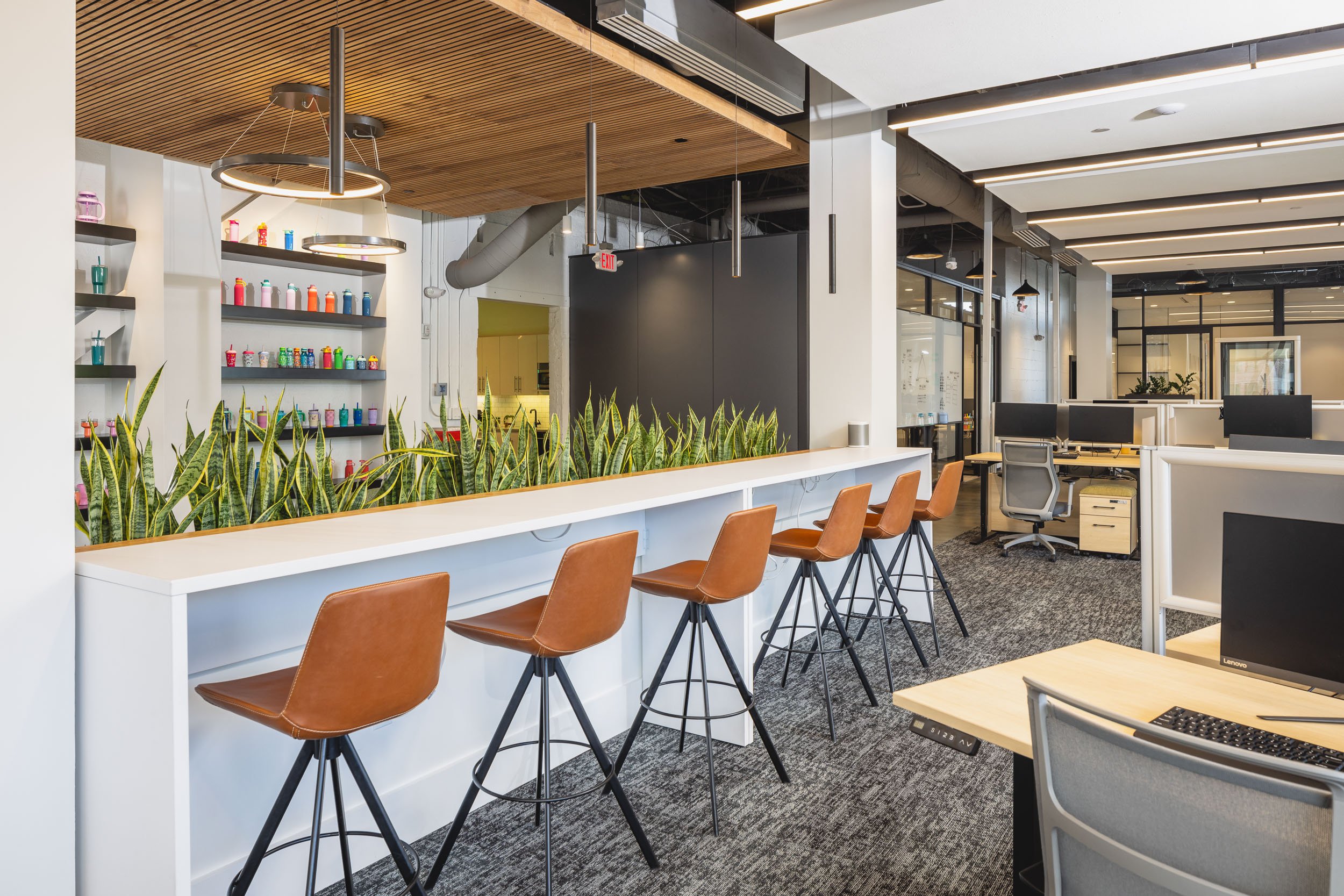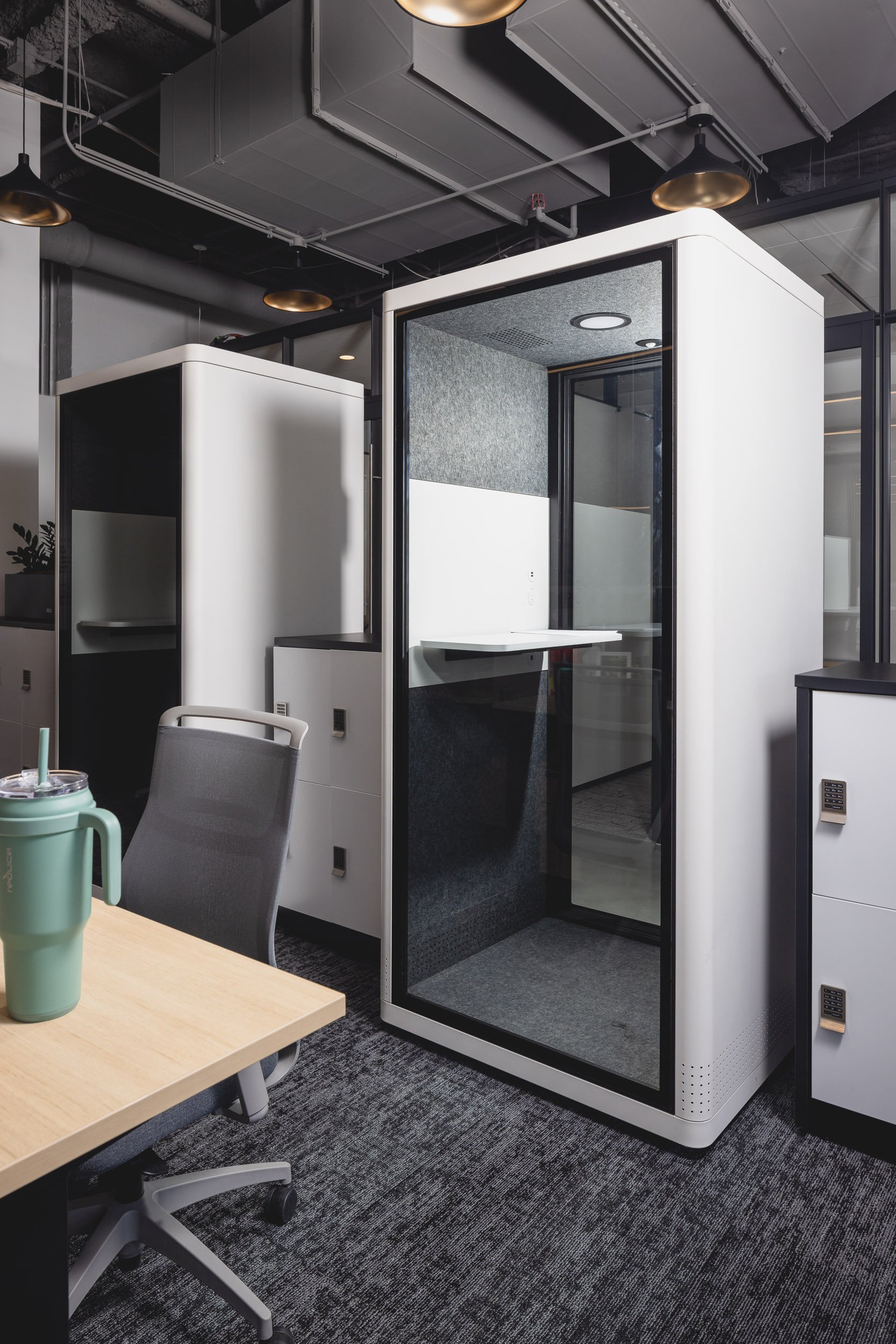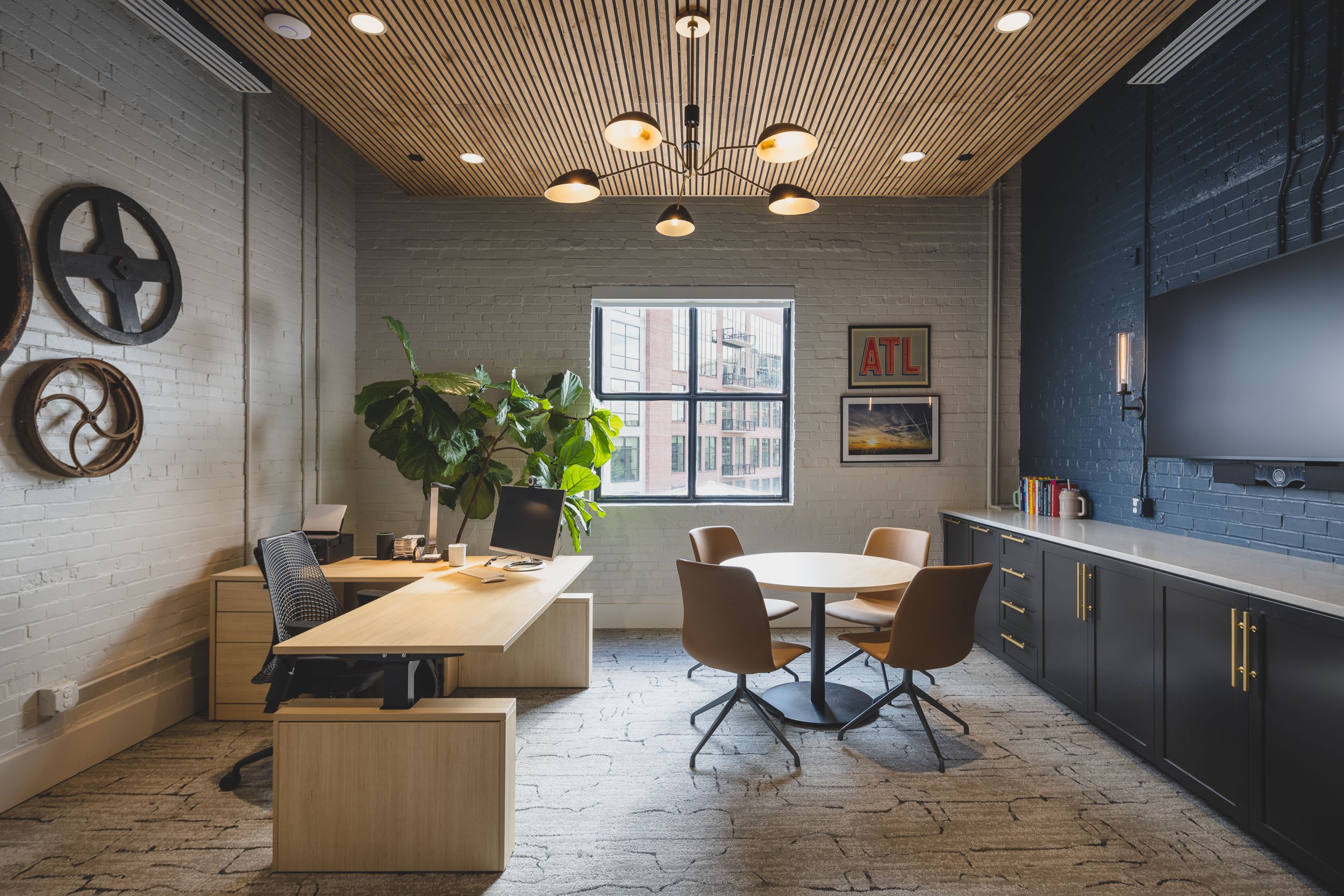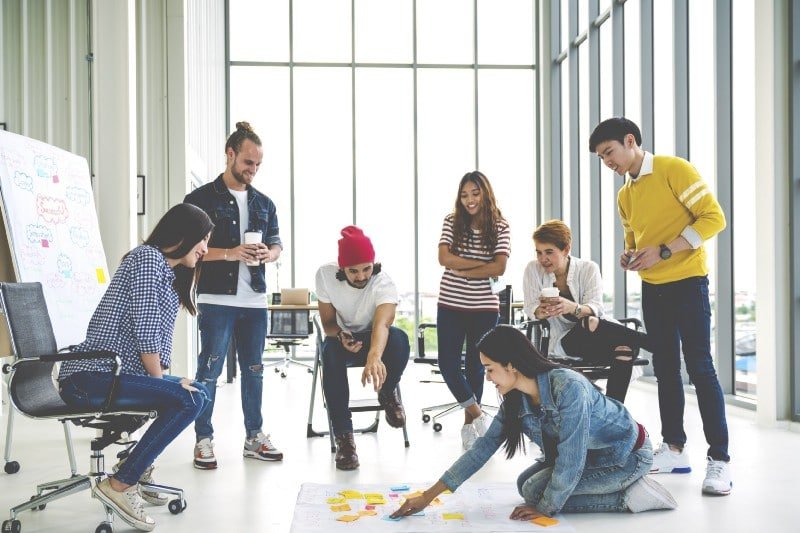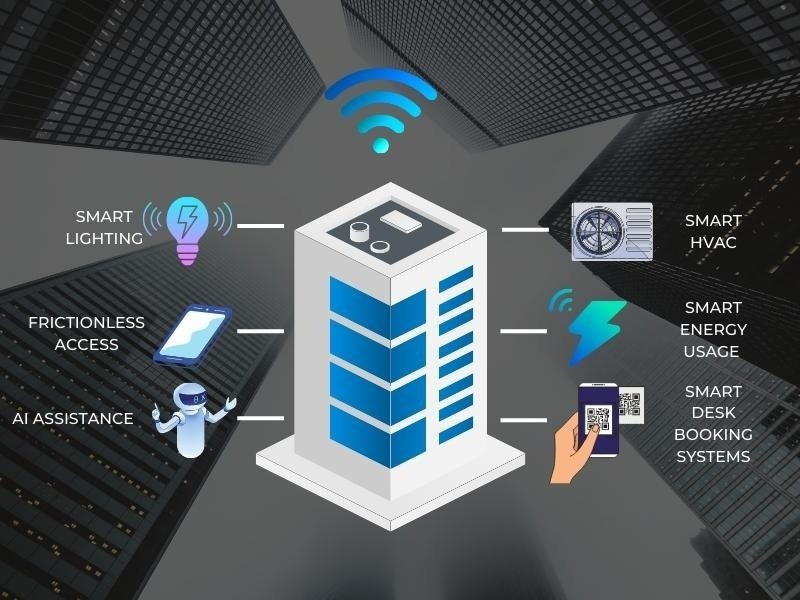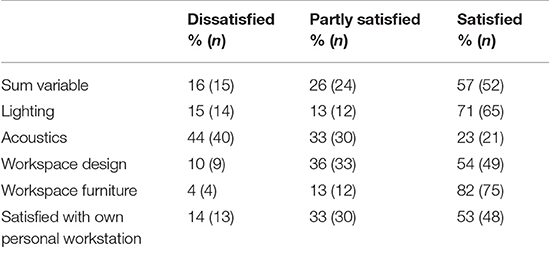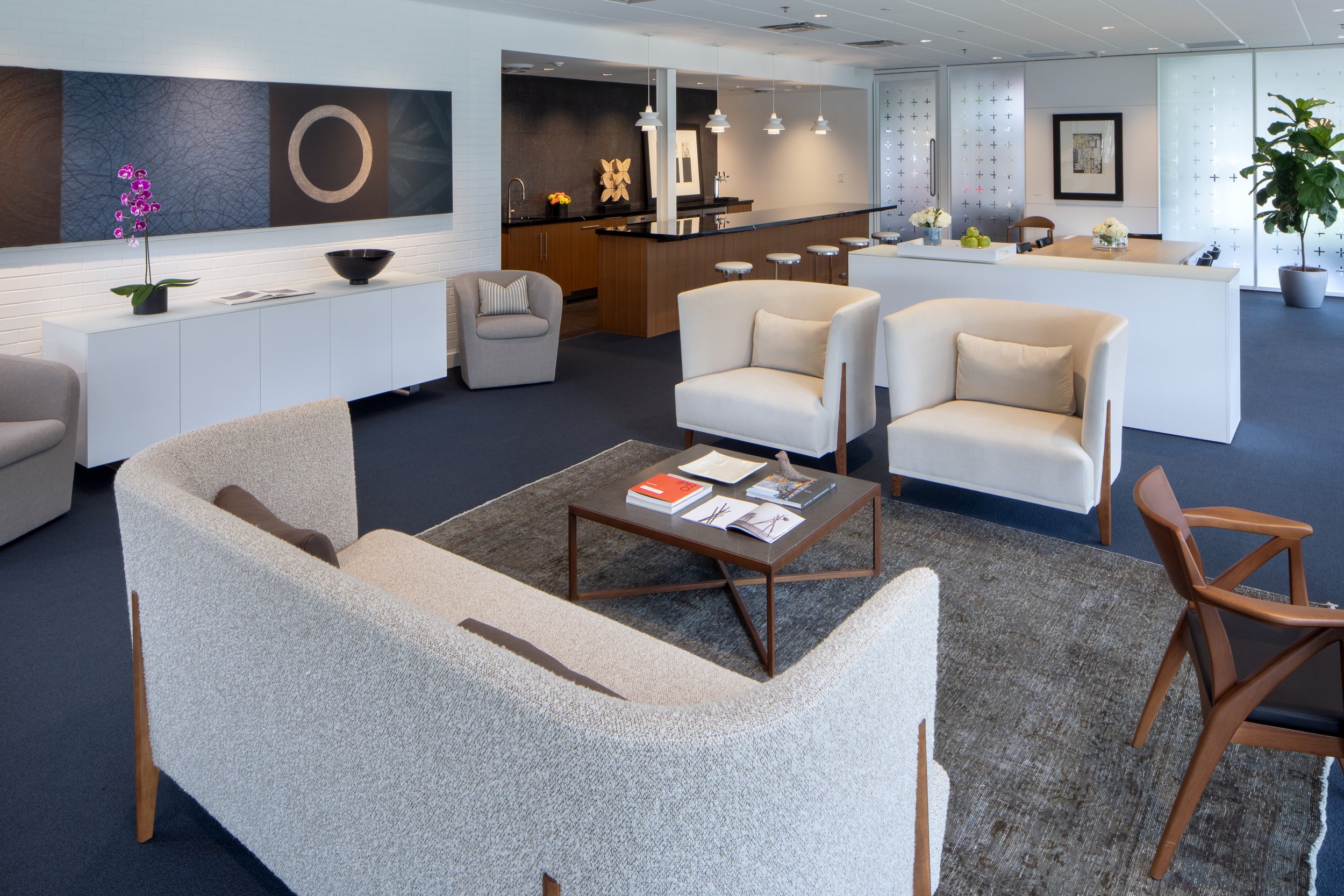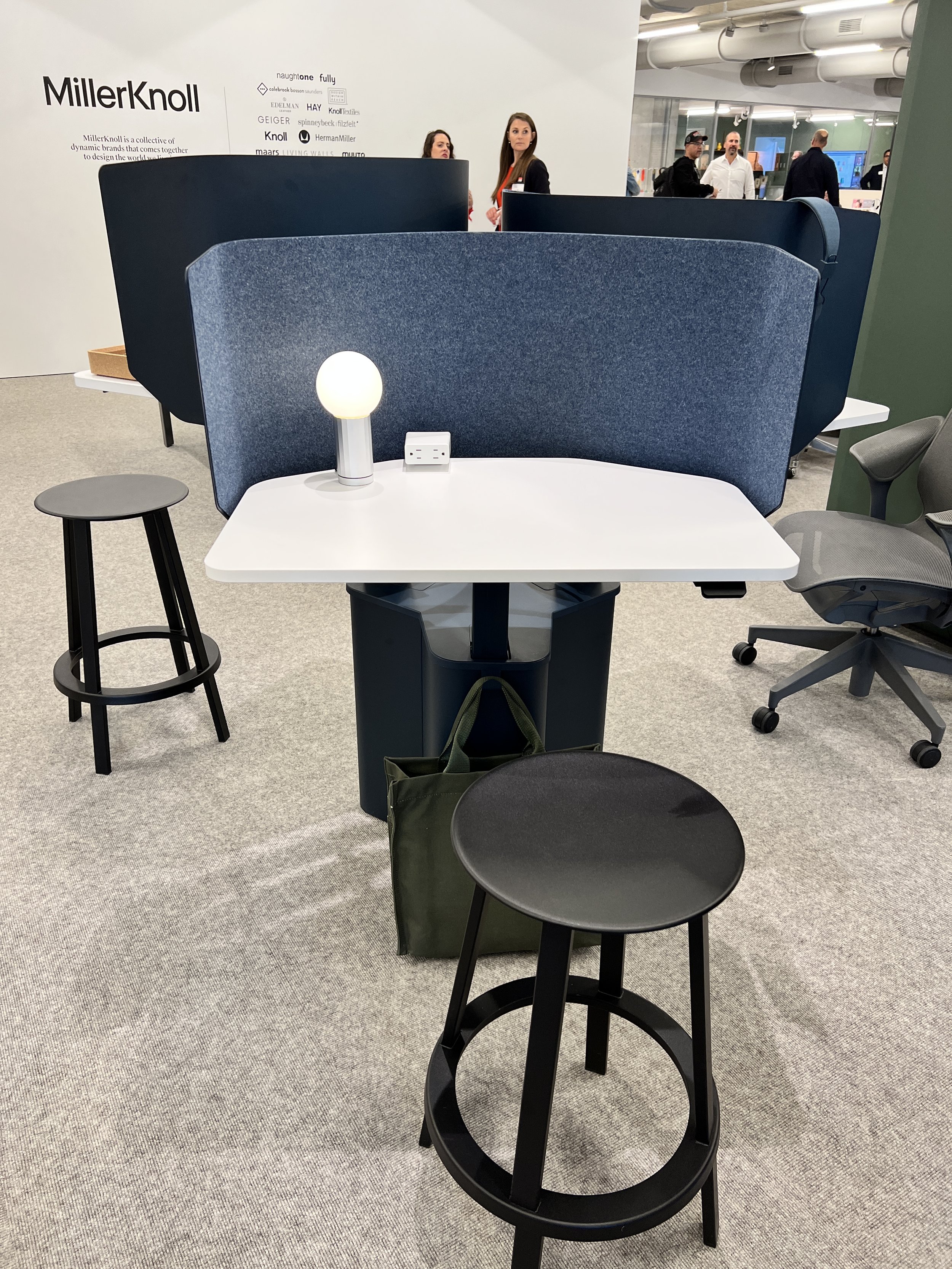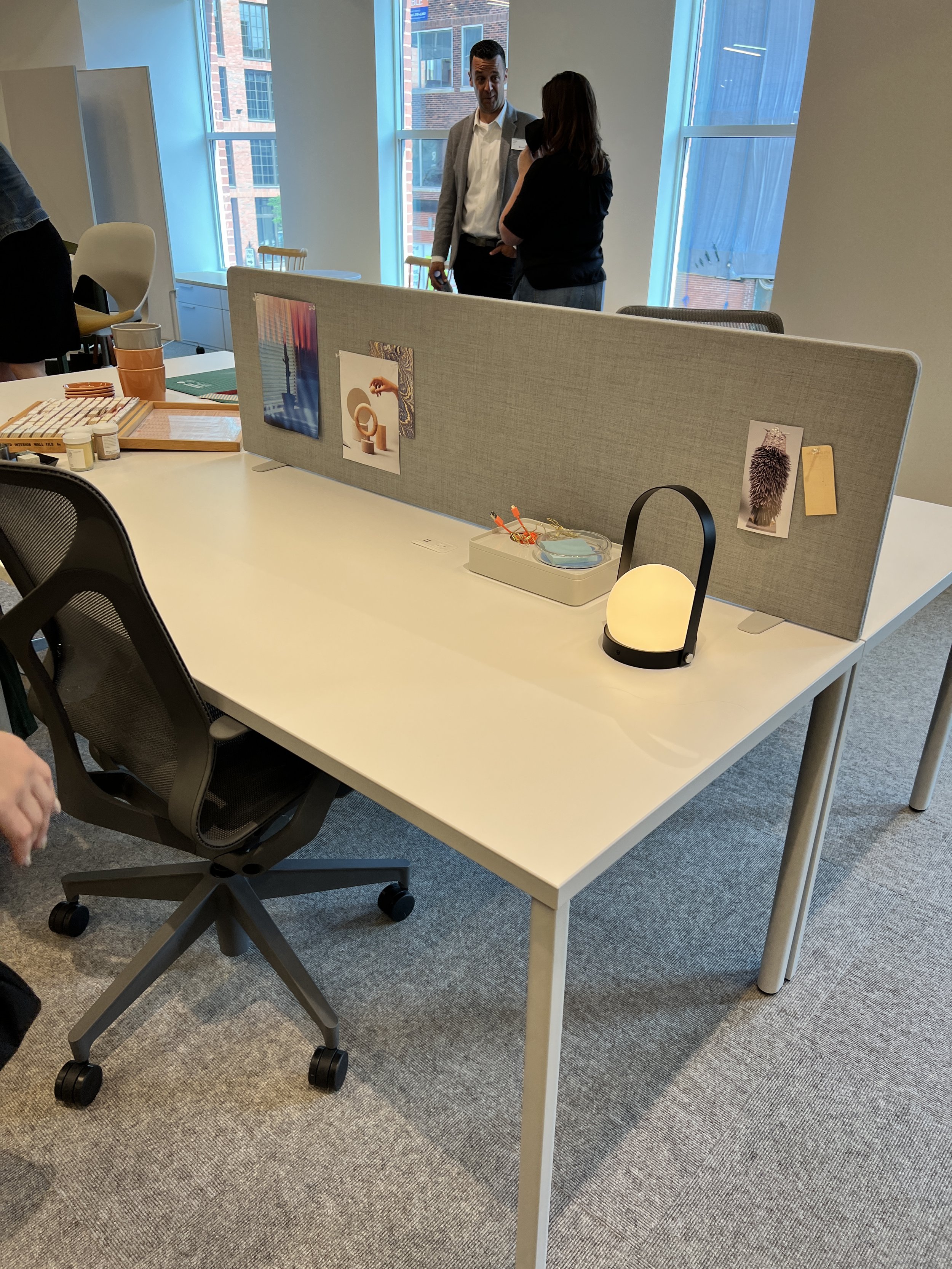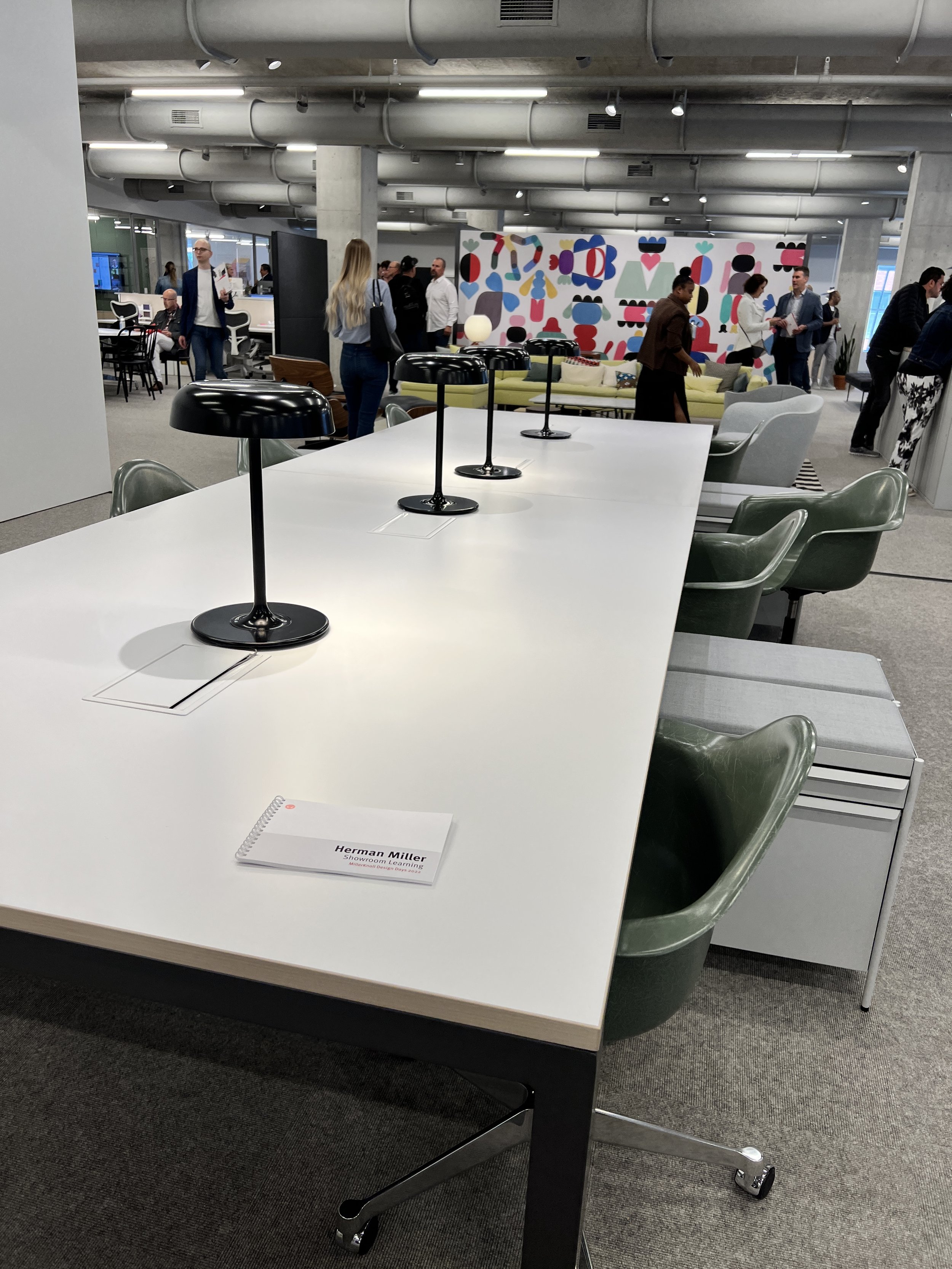The Green Revolution: Sustainable Design Trends in Commercial Interiors for 2024
Earth Day has been celebrated on April 22nd since 1970; it is a time to reflect on our impact on the environment and explore ways to embrace sustainability in every aspect of our lives. In the commercial design industry, 2024 is shifting towards more eco-conscious designs
Photo: Entertainment Tonight
Earth Day has been celebrated on April 22nd since 1970, it is a time to reflect on our impact on the environment and explore ways to embrace sustainability in every aspect of our lives. In the commercial design industry, 2024 is shifting towards more eco-conscious designs. According to the World Economic Forum, approximately 40% of solid waste in the United States comes from construction and demolition activities. As the demand for sustainable solutions grows, manufacturers are answering the call through eco-friendly, and efficient designs. Learn with us as we dive into some furniture manufacturers and how they are leading the charge in sustainable design for 2024:
1. Millerknoll:
A merger of two industry giants, Millerknoll combines Herman Miller's commitment to sustainability with Knoll's innovative design approach to improve both spaces and our planet. With products that prioritize both aesthetics and environmental responsibility, Millerknoll offers a diverse range of sustainable furniture solutions for work environments. When the collective of brands came together in 2021, they came with a different point of view all to make the future of design more sustainable for clients, the community, and the planet. MillerKnoll has taken the steps to do more for our planet by engaging the entire community in their sustainable practices such as eliminating plastic water bottles at all facilities reducing single-use plastic in packaging by 30% to and engaging in Maersk ECO delivery to replace fossil fuel with green fuel. The collective brands have designed products to be easily disassembled and recycled at the end of life. For example, the Ever Sofa by NaughtOne is the brand’s first upholstered product made to be easily disassembled and recycled at the end of life. The collective’s tradition of designing a greener world is evident as their 2030 goals continue to inspire more sustainably manufactured products such as Herman Miller’s Eames Molded Plastic Chair. As of 2022, the Eames Molded Plastic Chair is being made using 100% post-industrial recycled plastic.
2. Geiger:
Geiger, part of the MilerKnoll collective, specializes in high-quality wood furniture crafted with sustainability. With a focus on responsible forestry practices and minimal environmental impact, Geiger offers timeless designs that prioritize both aesthetics and eco-friendliness. Collaborating with the Environmental Protection Agency and its chemical suppliers, Geiger initiated the development of water-based top-coat materials in the mid-1990s. By 1998, they transitioned to water-based stains and sealants, making Geiger one of the pioneering furniture manufacturers globally to do so. This switch not only removed solvent-based materials and their associated VOCs from their processes, maintaining top-notch finishes for their products, placing Geiger on the path to becoming a leader in sustainable manufacturing.
3. DIRTT:
DIRTT stands out in sustainable construction and interior solutions in a big way. When your needs shift, DIRTT's adaptable system enables immediate, simple, and cost-efficient adjustments to your space, avoiding the need for demolition. By continually repurposing elements of your environment, you safeguard your investment, allowing for future reconfigurations and moves while minimizing landfill waste. DIRTT’s flexible system is engineered for disassembly, reducing the carbon footprint associated with both initial construction and subsequent modifications. With the multi-trade prefabrication construction system, your space is meticulously manufactured and pre-assembled at DIRTT's facilities, optimizing material usage, minimizing offcuts, dust, or waste, and ensuring a clean and efficient construction process.
4. Global:
Global is another industry leader in sustainable furniture design. When you think Global, think green. Global’s environmental commitment is seen throughout their manufacturing process. For example, eliminating the use of CFCs (Chlorofluorocarbons) and HCFCs (hydrochlorofluorocarbons) in all their manufacturing processes to protect the ozone layer. They utilize powder coat paint finishes, employing an electrostatic process that reclaims and reuses 99% of overspray without any solvents or CFCs. Of course, with the number of textiles used in our industry, Global is known to turn scrap into style with their partnership with Echoes in the Attic where they use textile scraps in their product designs from handbags to pillow designs, thus promoting reuse and restyling of fabrics. Global believes that they have a responsibility to protect the environment in all possible ways. Through their End-of-Life Program, they have been able to redirect their products to national/international programs for appropriate life cycle management instead of landfill disposal. Their product line not only prioritizes ergonomic functionality but also demonstrates environmental responsibility through a diverse array of eco-friendly offerings.
5. OFS:
OFS prioritizes sustainability, offering eco-conscious furniture solutions ideal for environmentally friendly commercial interiors. Their commitment to sustainable design is apparent in the introduction of two new fabrics, Allure and Roam, both made with Repreve recycled fiber. Each yard of Allure fabric incorporates 31 recycled bottles, while Roam contains 21 recycled bottles. OFS has also partnered with One Tree Planted to contribute to global reforestation efforts. Tree planting stands as the foremost solution to combatting climate change. Through this partnership, OFS can plant sufficient trees to counterbalance Greenhouse Gas emissions. These emissions encompass their building electricity and natural gas consumption, as well as transportation fuel usage for Styline and all company-owned vehicles.
As we celebrate Earth Month in April, it’s important to consider the environmental impact of our design choices. The shift towards sustainable design trends in commercial interiors for 2024 reflects a growing awareness of our responsibility to protect the planet. By choosing manufacturers like Millerknoll, DIRTT, Global, OFS, and Geiger, businesses can not only create aesthetically pleasing work environments but also contribute to a greener, more sustainable future. Let’s continue to prioritize sustainability in every aspect of our lives, starting with the spaces where we work and thrive.
These are only a highlight of the trends we’ve observed, what other trends are you seeing in sustainable design?
Celebrating the women who shaped the furniture industry
As we honor Women’s International Month, let us explore the lives and legacies of some of the most influential women in the furniture industry. From pioneers like Florence Knoll and Ray Eames to the trailblazers of today, their stories remind us of the power of perseverance, creativity, and determination in shaping the world around us.
Photo: Entertainment Tonight
International Women’s Month has finally kicked off! As we embark on this month-long celebration of women’s achievements and contributions, we are reminded of the incredible accomplishments made by women in the furniture design industry. Corporate Environments and MillerKnoll have been nurtured by the dedication and vision of women like Karen Hughes and Andi Owen. Their efforts and commitment to excellence have pushed our organizations forward, inspiring others along the way.
As we honor Women’s International Month, let us explore the lives and legacies of some of the most influential women in the furniture industry. From pioneers like Florence Knoll and Ray Eames to the trailblazers of today, their stories remind us of the power of perseverance, creativity, and determination in shaping the world around us.
The women behind Millerknoll:
FLORENCE KNOLL
Florence Knoll, an iconic figure in the world of furniture design, was not only a visionary designer but also an entrepreneur. As the driving force behind the renowned furniture company Knoll Inc., Florence played a pivotal role in shaping the modern landscape of interior design. With her keen eye for aesthetics and functionality, she revolutionized the concept of office furniture, introducing sleek, minimalist designs that emphasized both form and function.
Knoll's approach to design, characterized by clean lines, geometric shapes, and a harmonious blend of materials, set a new standard for modern furniture that continues to influence designers to this day. Her commitment to quality craftsmanship and attention to detail ensured that each piece exhibited elegance and sophistication.
Office Concept Sketch by Florence Knoll
Beyond her contributions to furniture design, Florence Knoll paved the way for women to assume leadership roles in the male-dominated field of design and architecture. Her legacy serves as an inspiration to aspiring designers everywhere, reminding us that with talent, perseverance, and determination, anything is possible.
To learn more, click Florence Knoll
RAY EAMES
Ray Eames, along with her husband Charles, formed one of the most iconic design duos of the 20th century. Together, they created some of the most influential furniture designs of their time, leaving a lasting mark on the world of modern design.
As a multifaceted artist, Ray Eames brought her unique perspective and creative vision to every project she undertook. Her playful yet sophisticated approach to design, characterized by bold colors, organic forms, and innovative use of materials, helped redefine the aesthetic of mid-century modernism. From the iconic Eames Lounge Chair to the innovative molded plywood furniture, Ray Eames' designs exemplified innovation and experimentation of the mid-century modern era.
Her ability to seamlessly blend art and functionality resulted in furniture that was not only visually striking but also comfortable and practical, making it accessible to a wide audience.Ray Eames' influence extends far beyond the realm of furniture design, encompassing architecture, filmmaking, and graphic design. Her spirit and creativity continue to inspire designers and artists around the world, proving that true innovation knows no bounds.
To learn more, click here Ray Eames
As we celebrate International Women’s Month, let us pay tribute to these extraordinary women and the countless others who have made invaluable contributions to the furniture industry. Their creativity, ingenuity, and passion have not only shaped the way we live and work but have also enriched our lives in ways we may never fully realize. Here's to the visionaries, and the pioneers who continue to inspire us with their timeless designs and enduring legacies.
We know that you all have a favorite designer that has impacted you so we want to know, who are your heros that you celebrate for International Women’s Month? Let us know in the comments!
Harmonizing Productivity: Harnessing Acoustics in the Workplace
The role of acoustics in the workplace is important. Excessive noise can serve as a daily obstacle, hindering concentration, disrupting workflow, and ultimately impacting job satisfaction. Whether it's the bustling chatter of colleagues, the continuous ring of phones, or the persistent ticking of the clock, unwanted noise can significantly slow down productivity
It's 3 o'clock, and the day feels like it's crawling along at a snail's pace. You find yourself immersed in putting the final touches on your project, but the surrounding noise makes it feel like an uphill battle. John's phone call with his wife echoes through the room, while Max's continuously buzzing phone adds to the noise. Sarah, seated beside you, murmurs softly to herself as she reads through her emails. A never-ending ticking sound surrounds you, but nowhere to go to drown out the noise.
In today's ever-evolving work landscape, the traditional 9-5 work model is undergoing a significant transformation. With companies determined to strike a balance between bringing employees back to the office and attracting top talent, the focus has shifted towards creating environments that prioritize both productivity and well-being. This paradigm shift needs the integration of collaborative spaces, individual workstations, and thoughtful acoustic designs to achieve both. Acoustic design, furniture placement, the addition of carpets/rugs, biophilia all go hand in hand to minimize distractions, reduce stress levels, and mitigate sound distortion to appease neurodiverse employees.
The role of acoustics in the workplace is important. Excessive noise can serve as a daily obstacle, hindering concentration, disrupting workflow, and ultimately impacting job satisfaction. Whether it's the bustling chatter of colleagues, the continuous ring of phones, or the persistent ticking of the clock, unwanted noise can significantly slow down productivity.
Companies like Turf and Buzzispace have emerged as pioneers in providing innovative solutions to address these challenges. Turf's acoustic panels and partitions are meticulously engineered to absorb sound, reduce echo, and mitigate noise pollution facilitating an environment conducive to focus and engagement throughout the workday.
Similarly, BuzziSpace offers a diverse range of acoustic furniture, including sound-absorbing chairs, booths, and pods, which not only serve as stylish additions to the office but also provide functional solutions for creating quiet zones within the workspace.
By incorporating Turf Acoustic Solutions and BuzziSpace solutions into office design, companies can cultivate a more balanced work environment that supports collaboration, concentration, and creativity. These investments not only enhance productivity but also foster a sense of comfort and well-being among employees, serving to the neurodiverse group.
Prioritizing acoustic design empowers organizations to create a more encouraging work environment that nurtures employee well-being and performance. This includes sound-absorbing materials, thoughtful layout configurations, and the integration of technologies such as white noise machines or sound masking systems to minimize distractions and cultivate a quieter workspace.
Acoustics play a pivotal role in shaping the ambiance of the workplace. By addressing the challenges of noise and sound control, companies can pave the way for quieter, more productive work environments that promote employee and company success.
Corporate Environments was tasked with designing the Office of the Future at the Warner Robins Air Force Base; when doing so, it encountered a significant obstacle: the space featured high ceilings, which posed a challenge for managing sound levels effectively. By leveraging their knowledge and experience, they set out to implement tailored solutions that would harmonize productivity with the unique architectural features of the space.
The successful completion of the Office of the Future project at Robins Air Force Base underscored the transformative power of acoustics in shaping the modern workplace. Through design solutions and a commitment to excellence, Corporate Environments and MPS Acoustics demonstrated their ability to overcome challenges and deliver innovative acoustics optimized for productivity and well-being. As organizations continue to prioritize the creation of conducive workspaces, the role of acoustics will remain indispensable in unlocking the full potential of their workforce.
Contact us today to revolutionize your work environment!
Workplace Well-Being: Building a Supportive environment for Employees
As we continue celebrating Mental Health Awareness this month, the focus is on well-being, especially in the workplace. Explore how the workplace can contribute to and enhance employee well-being.
As we continue celebrating Mental Health Awareness this month, the focus is on well-being, especially in the workplace. This year, the conversation around well-being has and will continue to gain momentum as organizations recognize the impact of physical spaces on employee fulfillment.
The terms "wellness" and "well-being" are often used interchangeably. However, there's a difference. While wellness focuses on physical health, well-being is emotional, mental, social, and state of being. Understanding this distinction is important in designing strategies to support employees better. Explore how the workplace can contribute to and enhance employee well-being.
1. Emotional Well-Being: Fostering a Positive Atmosphere
Emotional well-being involves understanding and managing emotions. In the workplace, creating a positive atmosphere through open communication, recognition programs, and emotional support systems can contribute to the emotional well-being of employees.
2. Mental Well-Being: Embracing Individual Differences
Mental well-being goes beyond mental health issues. To support mental well-being, workplaces should embrace the differences in how individuals process sensory signals. (For more on this, check out our post: Embracing Neurodiversity) Providing mental health resources, destigmatizing mental health discussions, and offering flexibility can positively impact employees' mental well-being.
3. Social Well-Being: Cultivating a Connected Community
Social well-being is supported through positive interactions and a sense of community. The workplace can support social well-being by fostering a collaborative environment, organizing team-building activities, and promoting inclusivity. These initiatives contribute to a sense of belonging and social connectedness. At Corporate Environments, community and inclusivity are at the forefront of our organization. This month, the Spirit Committee planned a Vision Board Party for employees to participate in together to bring their visions to life by allowing a time to just enjoy being together, decompress, manifest, and set the stage on a positive note for the year.
4. State of Being: Designing Physical Spaces with Purpose
Designing physical spaces with purpose involves considering factors like lighting, ergonomic furniture, and comfortable break areas to allow employees various settings. A thoughtfully designed workplace can positively influence the overall state of being, contributing to a balanced work environment.
To support employees’ well-being, workplaces must take intentional steps. This includes providing resources for mental health, offering flexible work arrangements, fostering a culture that prioritizes emotional support, and creating a physically encouraging environment. Recognizing and addressing the diverse needs of employees creates a more inclusive and supportive workplace.
When fostering employee well-being, understanding the differences between wellness and well-being is key. The workplace, as a significant part of our daily lives, has the potential to either enhance or hinder well-being. By prioritizing emotional, mental, social, and overall state of being, and designing physical spaces with purpose, organizations can contribute to a positive and supportive environment that promotes employee well-being in 2024 and beyond.
Ready to transform your workplace into a thriving hub of well-being and productivity? Contact us today!
7 Workplace Trends for 2024: Take a look at what’s in.
As we step into 2024, new trends are set to redefine the way we work, collaborate, and innovate.
In the ever-evolving workplace landscape, staying ahead of the curve is essential for businesses to thrive. This year's trend is for organizations to focus more on how the office can support employee needs rather than the number of employees working there. As we enter 2024, new trends are set to redefine how we work, collaborate, and innovate.
Here are the 7 rising workplace trends to look for in 2024:
1. In: Flexibility and adaptability in workspaces. | Out: Traditional, rigid 9-to-5 office structures.
The workplace has long been changed since the pandemic. Now, employees have the freedom to choose to work in or out of the office in search of spaces that support their needs, from quiet spaces to collaborative and technology-friendly spaces. The hybrid work model is here to stay in 2024, but many will continue to push for in-person experiences to make it worth the commute and build company culture where people can learn, grow, and feel accomplished. These spaces are needed more than ever now, ensuring a work environment that caters to the varied preferences and requirements of all employees. It’s a matter of how employers can provide an adaptable workspace for all.
2. In: Integration of VR/AR for immersive meetings. | Out: Conventional video conferencing tools.
The integration of VR and AR for immersive meetings will continue to rise in workplace settings to enhance team collaboration, brainstorming sessions, and shared virtual workspaces. The ability to create these immersive experiences is not only helpful to designers but also helps with onboarding new hires, training opportunities, providing virtual tours to international clients, and optimizing 3D models to present all angles.
3. In: Well-being programs addressing mental health. | Out: Neglecting mental health and overall well-being.
It is important to destigmatize mental health in the workplace and promote a culture that encourages open conversations, support systems, and clear access to professional resources. A supportive work environment contributes to the overall well-being of employees. Happier employees make a happier work experience and collectively get work done. The workplace is not just about having an onsite gym but more about creating spaces to connect, recharge, and have an overall positive impact on employees.
4. In: Eco-friendly office spaces and sustainable business practices. | Out: Indifference towards environmental impact.
As it remains prevalent in today’s climate, sustainable design is no longer an option but an obligation to our planet, and it starts with us - designing workspaces with sustainability at the forefront. The workplace of the future starts with not only smart technology but also pushing for sustainable design resources to increase the quality of our global community. Sustainability doesn’t always mean eco-friendly furniture but prioritizing natural lighting, pushing recycling initiatives, natural ventilation, and effective heating control systems. There is so much office spaces can do to better support eco-friendly business practices, from selecting materials produced with minimal emissions and eco-friendly materials to implementing reduce, reuse, and recycle strategies within the company culture, and much more.
5. In: AI-powered tools | Out: Manual, time-consuming processes without AI integration.
As the rise of AI resources is becoming a focus in today’s workplace, 2024 will be the year many companies will start to push out tools to reduce the time spent on tasks and increase available time to focus on strategic planning and the company's success. These AI-powered tools will be common as companies move towards a more efficient way to organize and analyze data, generate content, and automate simple daily tasks. This wave of new AI technology was only available to a niche industry, now every organization has some level of access to an AI tool to better improve work quality in less time and at a lower cost.
6. In: Continuous learning programs for skill development. | Out: Static skill sets with no emphasis on ongoing learning.
In today’s evolving professional world, the static skill set is becoming more outdated, and many organizations are focusing on providing workspaces that encourage continuous learning programs for individuals to expand their knowledge, enhance their professional growth and increase overall job satisfaction. Promoting a learning environment ensures that employees stay relevant in this rapidly evolving job market and helps employers retain top talent by prioritizing their personal and professional growth.
7. In: Creating diverse and inclusive environments. | Out: One size fits all
Providing practical strategies to foster inclusivity from hiring practices, diversity training, and creating groups to support employees of all backgrounds is a non-negotiable for 2024. It is important that organizations are actively working towards diversity and inclusion to create a workspace where every individual feels valued, included and supported.
The commercial workplace of 2024 is set to be a dynamic and innovative space, driven by what's in and what's out. By embracing the trends that are shaping the future and leaving behind outdated practices, businesses can create work environments that inspire creativity, collaboration, and success. As we navigate the evolving landscape, the key lies in adaptability and a forward-thinking approach to ensure a thriving commercial workplace that is focused more on the people who utilize it everyday.
SIT SMART, WORK WELL: 4 BENEFITS OF AN ERGONOMIC CHAIR YOU CAN’T IGNORE
Melissa, a designer at a local design firm in Atlanta, has been working at the firm for almost 2 years. At only 24 years old, she finds herself scheduling a few too many chiropractic appointments for someone who considers themselves a healthy person. One evening, as she plugged away on a project, Melissa caught herself constantly readjusting in her office chair.
Melissa, a designer at a local design firm in Atlanta, has been working at the firm for almost 2 years. At only 24 years old, she finds herself scheduling a few too many chiropractic appointments for someone who considers themselves a healthy person. One evening, as she plugged away on a project, Melissa caught herself constantly readjusting in her office chair. A moment of self-awareness struck her as she realized the discomfort she was experiencing. Her chair was the culprit. Whether you find yourself working in a home office, a flexible coworking space, or your favorite Starbucks, the common denominator here is sitting.
While the act of sitting may seem straightforward, it involves a complex interaction of bones, muscles, tendons, joints, and nerves. Even when we “sit still” our bodies are constantly moving. So, while the act of sitting is natural, maintaining one seated position for a long time (like the traditional office task position) is not. When we sit in forward leaning positions we place a massive stress on our bodies, particularly the lumbar area of the back and spine - (sound familiar?)
So why question the chair you’re sitting in? What sets a better office chair apart from the ones readily available on Amazon? The answer lies in the term "ergonomic," a buzzword that has been steadily gaining traction in the commercial furniture industry. In short, ergonomics is the study of people in their working environment. An ergonomic chair is designed with the explicit goal of removing discomfort and promoting optimal well-being.
In a world where the consequences of sedentary work are increasingly evident, an ergonomic chair serves as more than just a comfortable seat. It becomes a proactive measure to protect against the toll of prolonged sitting, offering a solution to the physical strain that many, like Melissa, experience. As conversations about ergonomic practices grow, picking your workplace office chair isn't just about convenience—it's a commitment to your employees' health.
Consider these top four features in the DNA of an ergonomic chair when contemplating your next seating choice:
1. Natural Balanced Movement:
An ergonomic chair is designed to promote natural and balanced movement while seated. Traditional chairs may force the body into fixed positions, leading to discomfort and stiffness. The Mirra 2 chair strikes a delicate balance between support and flexibility. Its Butterfly Back design ensures optimal spinal support, while the flexible seat and back adapt harmoniously to the user's movements. Reflecting Millerknoll's commitment to sustainability, the Mirra 2 is also an environmentally conscious choice for conscientious workplaces. Building on its past as the first office chair made with the environment in mind, Mirra 2 keeps the eco-friendly design going by using and reusing materials better. When redesigning Mirra, Studio 7.5's rule was simple: "every molecule counts."
2. Total Spinal Support
Designed with the natural curve of the spine in mind, this support helps prevent slouching, minimizes the strain on the lower back, and reduces the risk of developing back pain. Millerknoll's Embody Chair stands at the forefront of ergonomic innovation. Its pixelated support system adapts dynamically to the user's movements, promoting healthy posture and minimizing discomfort. It is known for pressure distribution, natural alignment, and support for healthy movement.
3. Dynamic Fit:
Ergonomic chairs are designed to support you through all your twists and turns, no matter the shape or size of your body. For example, the Aeron chair, an enduring symbol of ergonomic excellence, has evolved with the times under the Millerknoll banner originating in 1994. Having a breathable mesh design and customizable adjustments, the Aeron chair provides unparalleled lumbar support for a wide range of body types. For more than 30 years, MillerKnoll has been perfecting Aeron so that it’s good for your body as well as for the environment. It’s the chair that moves forward.
4. Flexible to use in different settings:
From comfort during group settings, to dedicated workstations, the chair accommodates sitting styles and postures with little to no adjustment to provide support for both short and long-term sitting. The Generation chair is designed to cater to the needs of modern, dynamic workstyles. With its adaptive flex back and intuitive adjustments, the Generation chair supports natural movement, empowering users to stay comfortable and engaged throughout their workday.
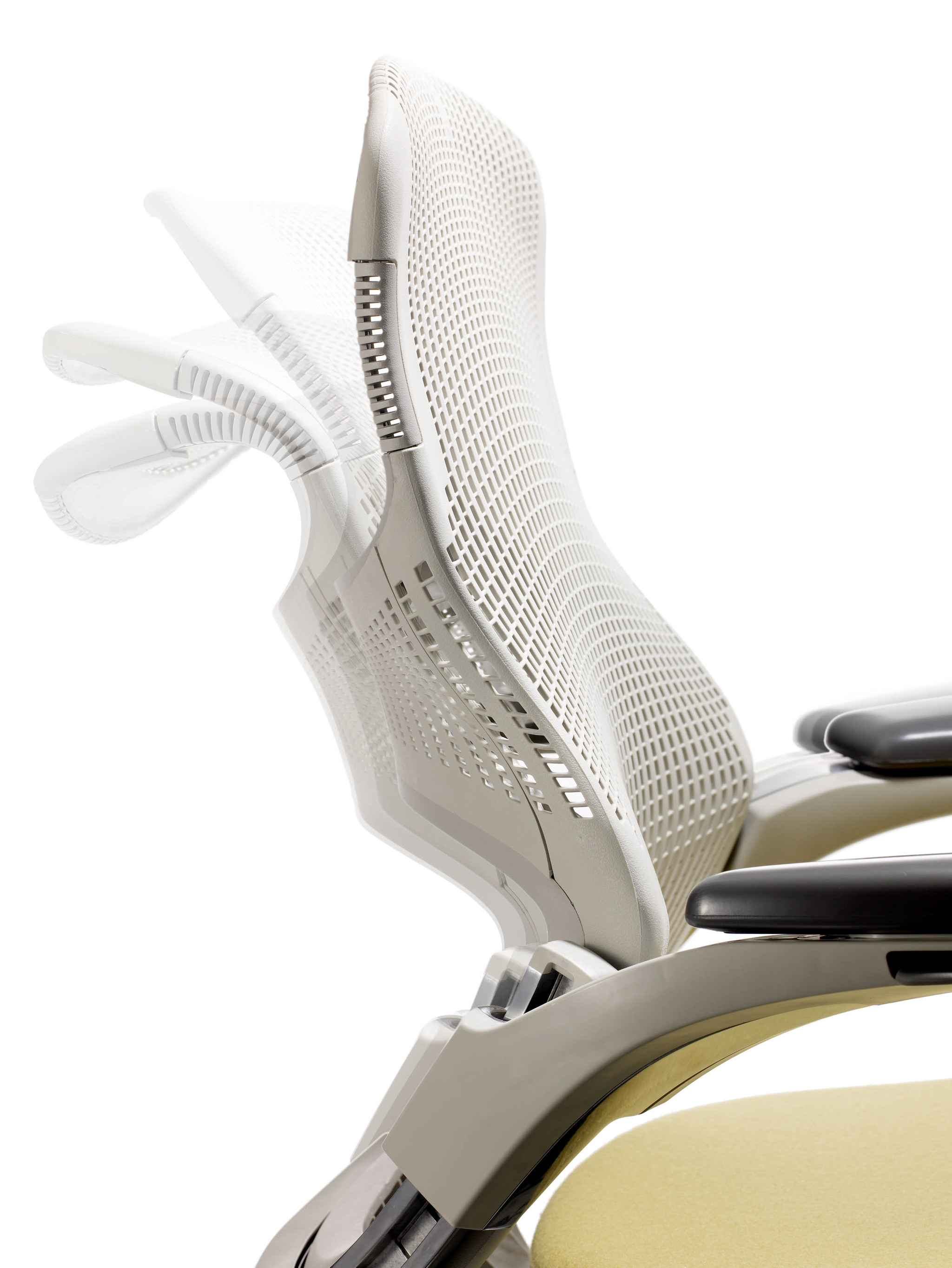

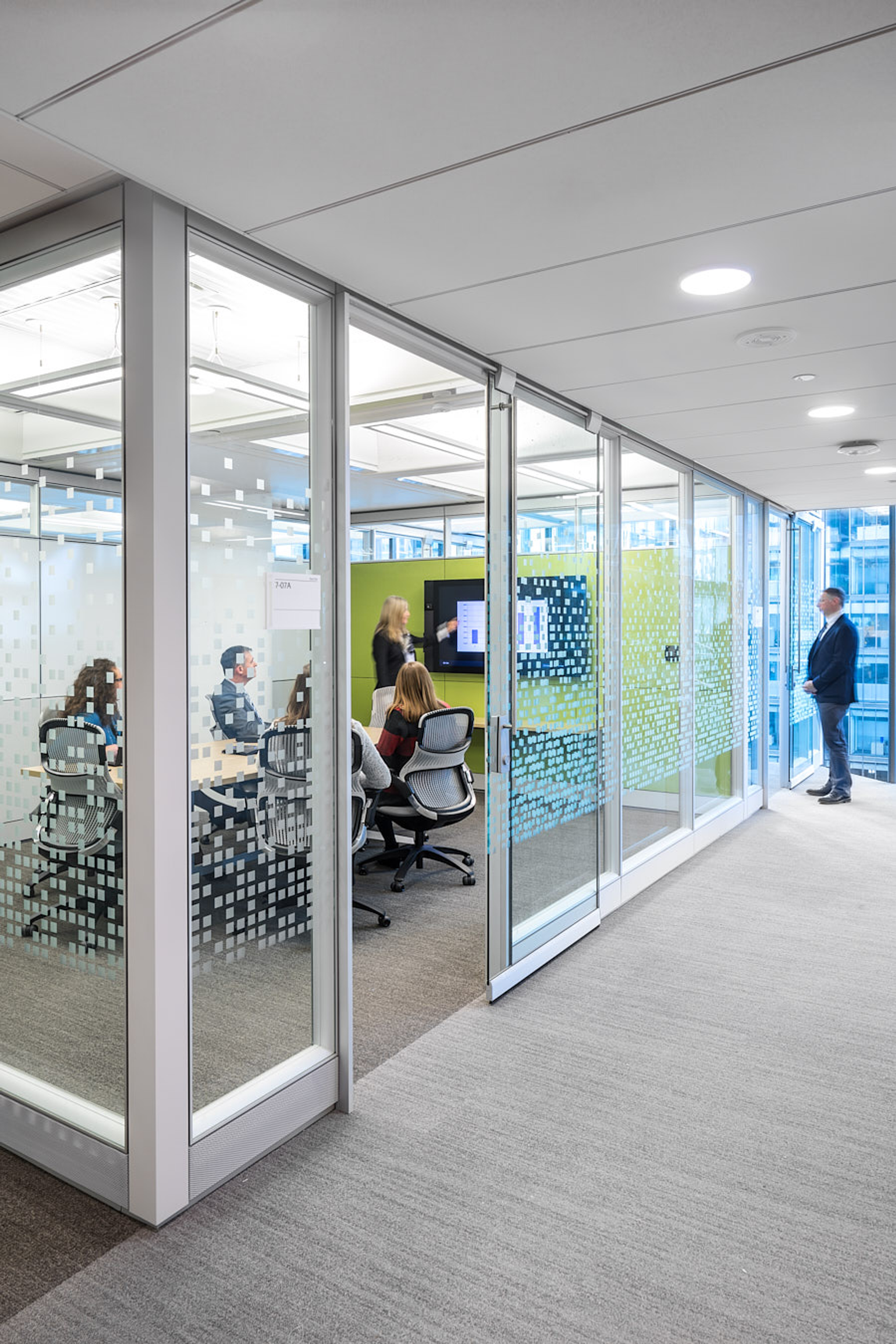
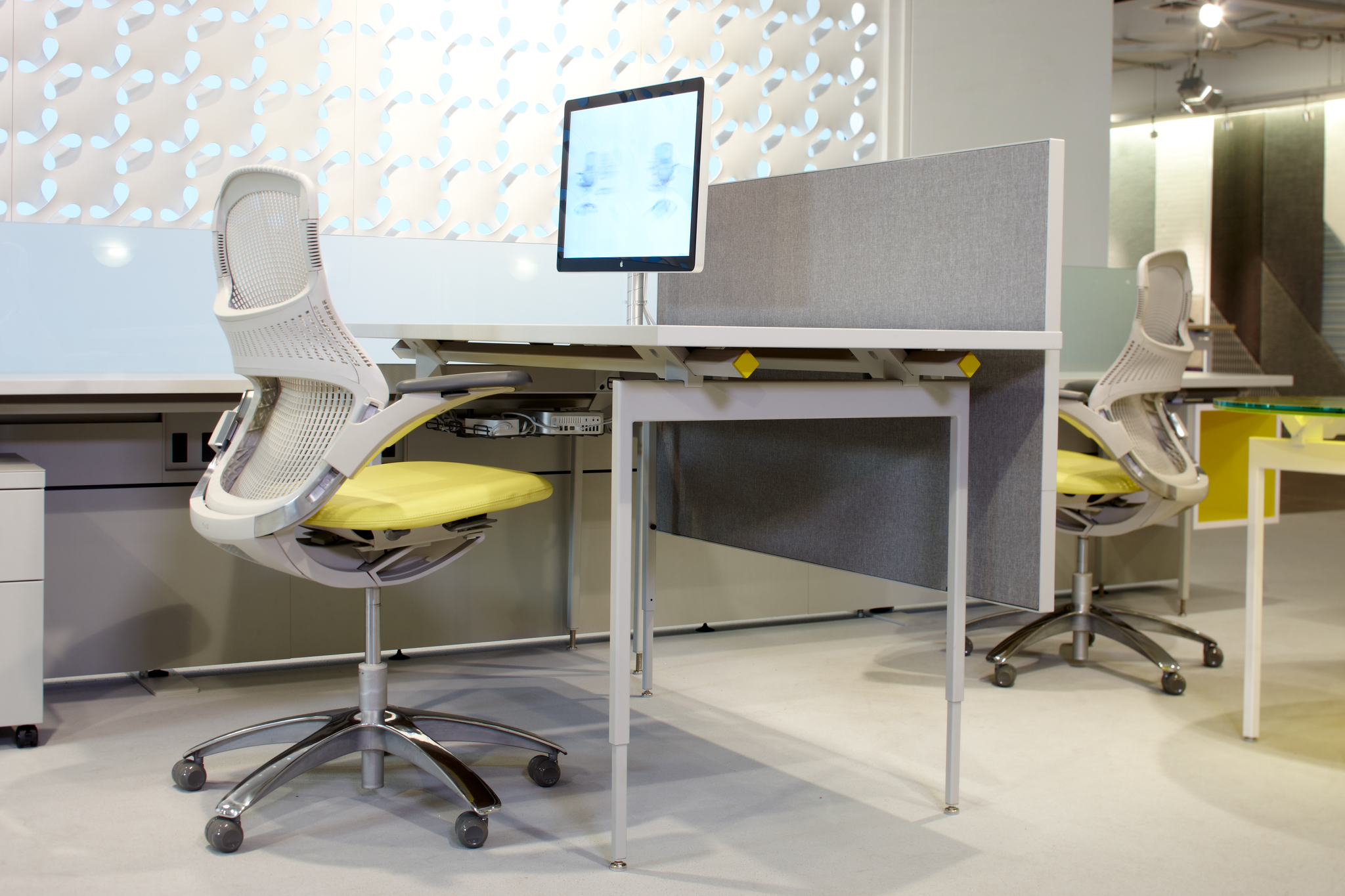
Are you ready to take control of your posture through a better sitting experience? Explore the ergonomic chairs and discover the mixture of design, comfort, and well-being.
Schedule a showroom tour to sit in various ergonomic chairs and find the perfect one for you and your space.
Empowering Productivity and Focus: 5 Benefits of the Office Pod
Rows of workstations, fluorescent lights overhead, and the constant hum of the photocopier are the backdrop of the daily grind for some. Imagine this: you're sitting at your desk, deep in thought, trying to put the finishing touches on a project due in a few hours. Just as you're about to type the last period, the chaos begins.
Rows of workstations, fluorescent lights overhead, and the constant hum of the photocopier are the backdrop of the daily grind for some. Imagine this: you're sitting at your desk, deep in thought, trying to put the finishing touches on a project due in a few hours. Just as you're about to type the last period, the chaos begins. Enter The Noisy Phone Talker: In the cubicle next to yours, your coworker is on a conference call that sounds more like an episode of WWE Smackdown than a business discussion. Her voice booms across the office, detailing the weekend escapades or where she’s traveling to next month. Meanwhile, the meeting room next to your workstation has become a revolving door. Teams are hosting their brainstorming sessions, presentations, and client lunches. The walls are not soundproof, and you can hear every word from every meeting. You feel like an unwilling participant in meetings about projects you're not even a part of. Distractions like these have become a daily battle, but you're not alone. Many employees share your struggle and understand the frustration of maintaining productivity in a setting designed for collaboration.
In today's work environment, in the effort to accommodate the ever-evolving needs of employees, organizations are scrambling to create innovative, flexible spaces; for example, designing spaces for teams to collaborate in while providing private spaces for phone calls, heads-down work and conferences. Since Herman Miller first created the idea for office pods in 1965, they have become a high-demand product optimizing office spaces to achieve the perfect hybrid workspace at a more cost-effective solution.
5 reasons you need an office pod in your office:
Eliminates Distractions and enhances Productivity:
Office pods mitigate one of the most common productivity killers: noise. The constant hum of conversation, phone calls, and various activities can be disruptive in open office environments. Office pods offer a controlled acoustic space where employees can focus without the distractions that permeate the rest of the office.
2. Versatility:
Office pods serve multiple purposes. They offer a comfortable space for private conversations, whether it's a one-on-one discussion or a small team meeting. They also provide an ideal setting for quick calls, focused work, and collaborative brainstorming. For example, the Framery Q, designed for 1-4 people, is ideal for both face-to-face and hybrid meetings, ensuring that your team can engage without disrupting other members in the office.
3. Inclusivity
Modern workplaces are recognizing the importance of accommodating neurodiversity. Neurodivergent employees, such as those with autism or attention-related challenges, often require quiet, controlled environments to perform at their best. Office pods offer them a space to concentrate, gather their thoughts, and work effectively. This inclusivity fosters a positive and supportive work environment where all employees can thrive.
4. Eco-Friendly Materials:
As environmental concerns become increasingly important, office design follows suit. Office pods are crafted to emphasize sustainability, using high-quality, low-waste materials. This not only reduces the carbon footprint of your workplace but also aligns your organization with eco-conscious practices. It's a step toward contributing to a more environmentally responsible office environment.
5. meets the need for privacy
In today's open office layouts, privacy is often sacrificed in favor of collaboration. However, privacy remains crucial for specific tasks, such as confidential meetings, personal phone calls, and focused work that demands privacy. Snapcab creates custom pod sizes tailored to your organization's needs; whether it's height, depth, or width, they can customize and create your ideal solution.
Incorporating an office pod into your workplace isn't just about adding furniture; it's about transforming how your employees work and interact within the office. The benefits span far beyond mere convenience. It can be a game-changer, enhancing productivity, fostering inclusivity, promoting sustainability, and providing much-needed privacy in open office settings. Ultimately, it contributes to an improved overall work experience, making it a valuable investment for any forward-thinking organization.
Want to take your first step into the world of Pods? We’re here to help you – contact us today!
Is the workplace dead? how the work model is affecting real estate
In a world where change is in constant motion, the traditional workplace concept is still being challenged. The rise of remote work and hybrid work models has led to a significant shift in how organizations view their office spaces and is forcing them to evaluate their spaces more frequently. This shift has profoundly impacted the real estate market, particularly regarding the rise of office-to-residential conversions and the repurposing of commercial spaces.
The post-pandemic work model has accelerated the adoption of remote work, leading many …
In a world where change is in constant motion, the traditional workplace concept is still being challenged. The rise of remote work and hybrid work models has led to a significant shift in how organizations view their office spaces and is forcing them to evaluate their spaces more frequently. This shift has profoundly impacted the real estate market, particularly regarding the rise of office-to-residential conversions and the repurposing of commercial spaces.
The post-pandemic work model has accelerated the adoption of remote work, leading many organizations to reconsider their need for physical office space. Some companies opt for a hybrid model, where employees split their time between working from home and coming into the office a few days a week. Others opt to downsize, realizing they don't need as much space if they allow employees to work from home. For instance, some tech giants have announced permanent remote work options for employees. This has led to increased vacancy rates in major cities, with vacancy estimates ranging from 15% to 20%. A prime example is Manhattan, once active with office activity, now seeing an increase in available office spaces as companies rethink their space requirements.
The shift towards remote and hybrid work has significant implications for real estate. With less demand for office space, there has been an increase in the availability of commercial properties, particularly older B and C-class buildings. These buildings, often built in the 70s and 80s, are seeing long-term tenants move out in favor of newer or repositioned spaces. The reasons behind this shift in preference for newer spaces include modern amenities, proximity to transit stations, and the desire for more energy-efficient and sustainable buildings. Newer office spaces often incorporate features like advanced HVAC systems, eco-friendly designs, and integrated technology that align with the changing needs of the workforce.
A potential solution to this growing vacancy problem is repurposing office space for residential use. Converting offices into housing could help address housing shortages in many cities and contribute to sustainability efforts by reducing carbon emissions. This trend has gained momentum in cities like New York and San Francisco, where repurposed office buildings provide much-needed housing options.
However, such conversions are not without challenges. Only 25% of commercial buildings have the right "bones" for residential conversion. Factors such as window depth, building size, and zoning regulations can limit the number of units created. Nonetheless, the potential benefits, both in terms of housing availability and environmental impact, make this an attractive option for urban planners and developers.
Despite these challenges, it's clear that our cities and workplaces are evolving. Downtowns are not going away; they're simply changing. They're becoming places where people can walk to work and enjoy nearby neighborhood staples like bars and restaurants. This shift towards mixed-use urban development creates vibrant, livable city centers catering to residents and employees.
Is there a silver lining to this office vacancy doom and gloom talk? Yes! The silver lining is that smaller companies now have access to high-end spaces at more affordable prices. This presents an opportunity for us, Corporate Environments, to help design beautiful and functional workplaces for your company. Smaller organizations can now compete for prime office locations that were once dominated by larger corporations.
The workplace isn't dead; it's just changing. As we navigate this new landscape, it's crucial to consider how these changes will impact how we work, our cities, and our planet. The hybrid work model presents challenges and opportunities - we must make the most of them. Adapting to this evolving work environment requires creativity, flexibility, and a forward-thinking approach, both in the real estate industry and the needs of employees.
Looking to evaluate your space?
Embracing Neurodiversity: Creating a Culture of Acceptance and Success in the Workplace
In the ever-changing view of the post-pandemic work model, discussions surrounding hybrid and remote work have taken center stage. However, within these conversations, a needed topic still needs to be addressed: the connection between neurodiversity and workplace design and how it impacts individuals with different sensory sensitivities. A recent study by HOK delves into this crucial aspect, shedding light on the significance of inclusive design and accommodations for both hyposensitive and hypersensitive users in the workplace. So, what is neurodiversity?
In the ever-changing view of the post-pandemic work model, discussions surrounding hybrid and remote work have taken center stage. However, within these conversations, a needed topic still needs to be addressed: the connection between neurodiversity and workplace design and how it impacts individuals with different sensory sensitivities. A recent study by HOK delves into this crucial aspect, shedding light on the significance of inclusive design and accommodations for both hyposensitive and hypersensitive users in the workplace. So, what is neurodiversity? Most people function within a considerable range, neurotypically. However, a significant fraction of the population extends into ranges considered neurodiverse, a natural range of variation in human cognition. A range of conditions, including dyslexia, anxiety, attention deficit hyperactivity disorder, and autism spectrum disorder, are included within the neurodiverse umbrella.
While the pros and cons of hybrid work models have dominated headlines, the experiences of neurodivergent individuals in the traditional office setup have often gone unnoticed. HOK's research reveals that this group faces unique difficulties stemming from the sensory environment of a typical office. Bright lights, constant background noises, and rigid structures can be challenging for individuals who process sensory information differently.
The study highlights several on-the-job accommodations that can drastically improve the workplace experience for neurodiverse employees. Among these are adjustments such as reducing the intensity of lighting, allowing regular breaks for physical activity or a change of scenery, and fostering an overall adaptable environment. These small yet impactful changes can create an inclusive workspace that caters to a diverse range of sensory needs, ultimately boosting the comfort and productivity of all employees.
In essence, inclusive design is the driving force behind addressing these challenges. Instead of molding individuals to fit the environment, organizations are encouraged to reshape their surroundings to embrace the strengths and talents of every employee. This approach not only supports neurodiversity but also sets the stage for a more dynamic and innovative workforce.
The "Designing a Neurodiverse Workplace" research proposes a powerful solution: providing choices. Recognizing that individuals possess varying sensory preferences and needs, the study suggests that offering a range of options empowers employees to curate their workspace in alignment with their comfort levels. This could mean providing quiet spaces for those hypersensitive to noise or offering sensory-friendly corners for those requiring sensory stimuli to focus. Ultimately, the goal is cultivating an environment where each employee can thrive.
As the dialogue around post-pandemic work models unfolds, it is imperative that the discourse expands to include the needs of neurodiverse individuals. The HOK study serves as a reminder that workplace design is not a one-size-fits-all. By embracing neurodiversity and supporting inclusive design principles, organizations can create spaces that truly welcome and celebrate every employee's unique talent, experiences, and sensory preferences. Doing so, they pave the way for a future where diversity is acknowledged and embraced. With services like furniture design/specification to workforce strategy, at Corporate Environments, we are dedicated to providing solutions to encourage everyone to reach their full potential. Schedule today to experience it firsthand and see how we can transform your workplace.
Research provided by HOK:Designing a Neurodiverse Workplace
Designing Tomorrow's Workplaces: 5 ways ai is influencing work environments
The commercial interior industry is undergoing a transformation with the integration of artificial intelligence. This revolutionary technology utilizes AI-powered algorithms to analyze various data points, including employee preferences and work patterns. The result is the creation of optimized office layouts that enhance efficiency and encourage collaboration among employees. Thanks to AI-generated data, data-driven decision making becomes possible, allowing furniture manufacturers and designers to adapt their products to meet the evolving needs of the workplace.
As technology continues to advance at an unprecedented pace, industries across the board are experiencing significant transformations. The commercial interior industry is no exception and is ready to undergo a revolution with the integration of artificial intelligence (AI) in the workplace. AI's impact on the commercial furniture industry promises to enhance productivity, optimize space utilization, and provide personalized experiences for clients and staff. Let’s explore how AI is reshaping the modern workplace.
1. Smarter Office Design
AI-powered algorithms are transforming the way office spaces are designed. By analyzing substantial amounts of data, including employee preferences, work patterns, and collaboration requirements, AI can generate optimal office layouts. These layouts are tailored to maximize efficiency, promote creativity, and foster collaboration among staff. It can also consider factors such as natural lighting, noise levels, and air quality to create healthier and more productive work environments.
2. Intelligent Space Utilization
In large office buildings, it is often challenging to determine the optimal utilization of space. AI can play a crucial role in addressing this issue. Through real-time occupancy tracking and sensor technologies, AI algorithms can monitor how different spaces are used throughout the day. This data can be used to optimize space allocation, identify underutilized areas, and make informed decisions on office expansions or reconfigurations. By minimizing wasted space, companies can reduce costs and create more flexible and adaptable work environments.
3. Personalized Employee Experiences
AI empowers businesses to provide personalized experiences for their employees. Smart furniture embedded with sensors and AI capabilities can learn individual preferences, such as preferred desk height, chair settings, and lighting conditions. It can also anticipate employee requirements, such as automatically adjusting temperature or suggesting break times based on workload and stress levels.
4. Enhanced Employee Well-being and Safety
Workplace well-being and safety are now considered critical for organizations. AI can help address these issues by monitoring environmental factors and proactively identifying potential dangers. For instance, AI-powered systems can detect and respond to air quality issues, ensuring a healthier workspace for employees. Additionally, AI can provide insights on ergonomics and posture, reminding employees to take breaks, stretch, or adjust their seating positions to prevent long-term health issues.
5. Data-Driven Decision Making
Lastly, AI generates great amounts of data that can inform decision-making processes in the commercial furniture industry. By analyzing this data, businesses can gain valuable insights into employee behavior, workspace utilization, and furniture performance. These insights can guide furniture manufacturers and designers in creating products that align with changing workplace needs, optimizing comfort, functionality, and aesthetics.
The commercial furniture industry is on the verge of a transformative journey with the integration of AI in the workplace. By leveraging AI technologies, businesses can revolutionize office design, optimize space utilization, personalize employee experiences, enhance well-being and safety, and make data-driven decisions. The future of the commercial furniture industry will be characterized by dynamic, adaptable, and intelligent workspaces that prioritize employee comfort, productivity, and satisfaction. Embracing AI in the workplace will redefine how we perceive and experience the modern workplace.
3 reasons why workplace design really matters.
Stale walls. Cubicles. Commercial carpet. Does any of that sound familiar? The traditional workplace has long been defined as a place where you come in, sit in a sea of cubicles, and plug away. Although some organizations still include cubicles, workplace transformations have become more necessary in today’s post-pandemic world.
Stale walls. Cubicles. Commercial carpet. Does any of that sound familiar? The traditional workplace has long been defined as a place where you come in, sit in a sea of cubicles, and plug away. Although some organizations still include cubicles, workplace transformations have become more necessary in today’s post-pandemic world. The office’s role has changed tremendously; it is now seen as part of the process for new talent to review before choosing to work for a company. Companies like Corporate Environments plan spaces that serve as both an environment to inspire and unleash employees’ best and a place where people choose to be. From Healthcare to Higher Education, workspace design has been at the forefront of many organizations’ goals. Many offices have become workplaces where employees are not at a desk for hours on end; now, there are breakout areas where employees can relieve stress, café areas to have a snack, and communal areas to socialize with colleagues. Chances are, when a new client or a potential talent walks in, they take a moment to scan the room and form a first impression. First impressions matter, especially when attracting employees, clients and building trust. The workplace is a powerful tool that tells the story of a company, it says a lot about the company culture. What story does your workplace tell?
When it comes to having functional working space, many people often forget the intent behind their workspace, from art selection to furniture placement- It all matters. So why is it that companies are starting to invest and prioritize workplace design now more than ever before? What has pushed the shift in how and where we work? The answer is simple: workplace design aims to better serve its employees because the workplace is a destination- a destination with an experience. The workplace plays a vital role in providing professional development, retaining and attracting employees, and fostering a company’s culture.
Reason number one: Cultivating professional development.
Nowadays, the expectations of providing professional development in the workplace have risen. There has been a high demand for continuous training to help employees enhance and refine their technical skills. Businesses want to offer different working spaces with various features to accommodate employees and guests during long workshops. With the new hybrid working model, many employees are working on and offsite making it is essential to integrate technology in these high-trafficked areas. For example, DIRTT provides various solutions to incorporate technology hardware into the design of the workplace. This solution comes with different display options to help support the workforce and improve employee engagement.
The need for in person seminars, lunch-n-learns, and training has led to many companies reevaluating and redesigning their workspaces to provide staff with a more functional design. As the saying goes, great employees deserve an excellent workplace design. To further equip current employees, the office design should provide modular furniture such as whiteboards with casters, chairs, ottomans, and laptop tables that are easily moved to create an adaptable learning environment. If the workplace screams dull, no one would be thrilled to show up. If people aren’t energized by their environment, what kind of work product will result from their efforts? The reason why workplace design matters is to serve employees.
Reason number two: Attracting and retaining talent.
It takes mere seconds to form a first impression. As we have all experienced, first impressions are tough to redo, so having the right design the first time is important. The most recent workplace designs include soft seating, warm lighting, biophilia, art, and technology-based furniture. There are many designs organizations can utilize in their workplace to differentiate themselves from competitors. Having height adjustable desks, ergonomic office chairs such as the Knoll Regeneration chair, and a variety of different working areas demonstrates values of putting employee welfare first. A combination of open office areas as well as privacy/quiet areas provide opportunities for employees to diversify their day and promote areas that best suits their project needs. When you keep and care for employees, your customers will be better catered to as well. As generations are transitioning in an out of the workforce, the priorities of attracting new and top talent are shifting and worth investing in. Just consider the impact it will have on employee’s wellbeing, productivity, and relationships with clients.
Reason number three: Fostering work culture.
Have you ever worked for a company where the work culture was non-existent? Yeah, we all have one company that pops into our minds. The physical work environment affects the way people interact with each other, their performance, and the overall cultural ambiance. Newer generations consider the workplace environment a top priority when deciding to work for a company. According to FreeOfficeFinder, a third of office workers in the millennial age group are willing to sacrifice a higher salary for a positive workplace that motivates and inspires. A pretty office will just be a pretty office, offering employees a sense of belonging goes much further- people want to feel seen, heard, and cared for by employers. Providing spaces where employees can build connections that enhance ideas creates an overall sense of team collaboration and accomplishment. Using spaces that are multi-faceted, such as café areas, yoga/exercise areas, and collaboration spaces cultivate camaraderie. Designing for a “we” environment will promote a positive work culture.
Designing for a “we” environment matters because the dark days in cubicle office spaces are gone. Offices design is becoming a branding opportunity to cultivate, nurture, attract, and retain employees. When the workplace serves its employees, the employees can best serve their clients, boost relationships, sales, and productivity.
Get in touch with Corporate Environments and
we will find the ideal solution for your business.
THE NEW WORKPLACE DESIGN: HOTELIFICATION
Since 1969, Neocon has been established as the industry leading commercial interior design event showcasing ideas that will transform workplace environments. Neocon continues that tradition today, still recognized as the most valuable with a high-attendance rate event for designers, manufacturers, and dealers to discover people, products, and upcoming trends. This year, Neocon’s exhibitors showcased designs with warm, welcoming, and collaborative layouts to visually share the future of office spaces – the hotelification concept. This concept portrays the need to blend the digital and physical realms, promoting a new way of working and creating a positive work experience for everyone.
Neocon returns after a hiatus with the hotelification concept.
Since 1969, Neocon has been established as the industry leading commercial interior design event showcasing ideas that will transform workplace environments. Neocon continues that tradition today, still recognized as the most valuable with a high-attendance rate event for designers, manufacturers, and dealers to discover people, products, and upcoming trends. This year, Neocon’s exhibitors showcased designs with warm, welcoming, and collaborative layouts to visually share the future of office spaces – the hotelification concept. This concept portrays the need to blend the digital and physical realms, promoting a new way of working and creating a positive work experience for everyone.
After taking a hiatus during the pandemic, Neocon 2022 was the launchpad for the hotelification concept. This year, Neocon was back, lines were longer, elevators were full, and showrooms were buzzing with activity. Chicago was alive again. TheMart had thrill, design, and innovation on full display. Again – it was back with a stronger statement – new designs for the new way of working. Because the world is constantly changing, office models are also evolving – staying up to date and putting employees/clients first, and those tenants will remain a priority now and in the future.
The new hotelification concept derives from the resimercial trend that started before the pandemic. The combination between life and work has become interconnected, and the lines are no longer visible. The new way of designing office spaces has ceased to be linear. This new model includes privacy spaces, collaborative spaces that provide technology to support virtual meetings, stand-alone stations & single-person stations that support collaboration, café-like meeting areas, and kitchens. With the inclusion of a new layout, employers aim to bring employees back into the office and create an exciting work culture.
Flexibility, inclusion, and mental health were conversation points at Neocon. Many businesses are now designing their office spaces to provide flexibility, inclusivity, and wellness spaces for employees to decompress and take mental breaks. Pre-pandemic, the resimercial concept combined residential and commercial bringing a home-like feel into the workplace with café-style rooms, office lounge areas, and kitchens to optimize the work-life culture. Fast-forward to today with an increased demand for work-life balance, making the ability to transform the office space that encompasses both a residential and commercial feel vital. The layout of the office space is moving away from a desk, chair, and white walls into a more inviting, warm area with wood accents and soft, muted colors, such as golds, purples, blues, greens, and reds.
Creating a flexible work culture starts by providing spaces that support technology for those that are working remotely to seamlessly collaborate with those that are in the office. Flexibility includes working areas, desks, lounge furniture, individual pods, and café areas. The goal is to provide furniture in office spaces to create a comfortable work experience. Pre-pandemic, sitting at a desk was a tradition; now, more people have acclimated to working on various furniture pieces and collaborating virtually.
Corporate Environments has implemented this concept in recent projects, such as its collaboration with Knoll in the Cooper Carry office renovation. Cooper Carry had a vision, the vision of creating their headquarters into a hybrid way of working to increase the number of employees coming back into the office.
Read the story: The Future is Flexible – Knoll
There has also been a rise in inclusive design to foster workplace environments and promote greater employee inclusion in all organizations. Workstations provide an opportunity for team collaboration, individual work time, and a space where everyone feels welcomed and part of a team. Many showrooms implemented rounded corner furniture and layouts. The purpose was to create a more inviting sense of inclusivity for employees and clients. As seen in GreyStone Power’s recent project, they wanted to develop a collaboration-friendly environment designed to attract new talent and retain longtime employees. Read the story of how Greystone reimagined their workspace partnering with Corporate Environments and design firm Smallwood. Powered Up! – Knoll
Providing wellness spaces in different office areas promotes employee productivity and increases employee retention. Offices are moving away from the conference-like room into spaces where employees can have a moment to decompress or collaborate. The biophilic design has become a solution and lesson learned to bridge the gap between nature and work. Bringing in the biophilic designs creates a more natural, comfortable, and relaxing space people have acclimated to during the pandemic. Many firms are implementing woods accents, warm-muted color palettes, biophilia, and privacy & collaborative spaces.
Not only has there been a change in workplace design, but also in how people work. Post-COVID, remote work has become prevalent. It is a new working method – a method that is not leaving. Many businesses have transitioned to hybrid working, while others have entirely transitioned to 100% remote working. The changing landscape of how and where people work will continue to evolve as we work towards the post-COVID era and workplace design will evolve alongside it. There has been an increase in people switching jobs for many reasons, one being the flexibility of hybrid working. The pandemic was a launchpad for employees to assess their values and determine if their employer offers those opportunities; people are not settling anymore.
Are you ready to transition and renovate your space into a more resimercial workplace? Connect with us and let Corporate Environments create a workspace that will meet the needs of both your employees and your business.
Do you agree with the hotelification approach? In the comments below, share why or why not.
healthcare design for durability, flexibility AND aesthetic
Interior design for healthcare is filled with unique considerations: durability because of the hard use in areas that host patients around the clock, flexibility to address a wide range of functionality and equipment, and aesthetics to promote efficiency and the comfort of patients. All of this in a setting where cleanliness and hygiene are crucial factors and where the space needs to remain in constant use. Downtime for repairs can be a logistical nightmare. Combine these elements with the rapid construction timeline often required for healthcare spaces and the challenge can be daunting.
How Prefabricated Architectural Solutions Rise to Meet the Challenging Demands of the Healthcare Industry
Interior design for healthcare is filled with unique considerations: durability because of the hard use in areas that host patients around the clock, flexibility to address a wide range of functionality and equipment, and aesthetics to promote efficiency and the comfort of patients. All of this in a setting where cleanliness and hygiene are crucial factors and where the space needs to remain in constant use. Downtime for repairs can be a logistical nightmare. Combine these elements with the rapid construction timeline often required for healthcare spaces and the challenge can be daunting.
Featured below are three healthcare project profiles. In every instance, the facilities and design teams chose to buck traditional construction methods in favor of the advantages of modular construction. The customized solutions offered by DIRTT Environmental Solutions were specifically tailored to provide a state-of-the art response to the needs of each space.
Detroit, MI
Detroit Medical Center needed a space for observing ER patients with undefined and mild symptoms without tying up their medical/surgical beds. The hospital devoted an underused storage area to be transformed into a new observation unit equipped with 29 beds. However, the logistical prospect of such a big construction endeavor to the working hospital was creating a headache before it even began. Concerns about the drywall dust and noise associated with traditional construction were paramount to the point that the design team was receptive to taking a new direction with custom prefab construction.
“I sat down initially as a skeptic,” said John Miller, architect and senior program manager at the Detroit Medical Center. But he gave DIRTT its day in court and determined that if the team could make it work in terms of budget after a careful cost-by-cost analysis, then it would be a game changer for the observation unit project.
“We were 5% less on using DIRTT than using a stick built comparison,” said Miller. The cost savings with DIRTT came from the labor savings. Eliminating on-site fabrication not only reduces noise and debris, it also nets a tremendous reduction in the cost of labor.
Timeline was also a massive factor for the project; it had already been cut by 18 months by the time DIRTT was proposed. At the very least, it was an expectation that DIRTT would be able to match the conventional construction timeline. DIRTT was able to complete the project 30 days sooner than the conventional construction quote, which impressed the team tremendously.
The resulting space enhances the comfort of patients and performs well for staff. “We’ve got great aesthetics,” said Miller. The durability of the beautifully designed space has also garnered high praise from the project team. The observation unit patients are more mobile and active than those typical to the emergency department, and they tend to interact with the space more heavily. “We get hard use of the space,” explained Miller. “These patients are fidgety. They’re not home.”
Despite the heavy use the space receives, the team hasn’t had to perform any repairs to the DIRTT elements. Although easily replaceable DIRTT tiles were a key consideration of the facilities team, they haven’t even had a chance to showcase this aspect during tours: DIRTT is holding up perfectly in the high-demand space. “We have had to repair and protect drywall regularly,” said Miller.
Group Health Cooperative of South Central Wisconsin
Madison, WI
This cutting-edge primary care clinic sought to employ flexibility and efficiency to create a space that would continue to evolve alongside changing healthcare delivery methods. For Group Health Cooperative, timeline was a critical factor: three months to complete a 4,100 square foot space. Conventional construction was not a viable option for the project.
“We chose to build a space in which every inch was thought through, where design features are functional,” said Project Management Specialist Becky McGuire. DIRTT’s unique customization allowed the team to forgo protective bumpers, provide aesthetically-pleasing privacy in exam rooms, and maximize areas where equipment could be stored.
“We felt DIRTT provided us with the most efficient footprint flexibility, as well as quality of design,” explained CEO Kevin Hayden. Staff have lauded the space’s effect on increasing the level of care that they are able to deliver, and local medical staff are clamoring for position openings at the clinic.
“Now we have a blueprint for easily reconfiguring and adapting our clinic space to meet healthcare’s ever-changing needs,” said McGuire.
Hunterdon Orthopaedic Institute
Flemington, NJ
Hunterdon Orthopaedic Institute sought to differentiate themselves from the competition by offering patients a world-class facility that despite its grand scale, didn’t feel impersonal and convoluted. Efficiency was vital to ensure that patients would feel well-cared for and comfortable. Organized equipment storage and ergonomic positioning would allow care providers to focus on patients rather than fumbling for items haphazardly.
The demanding storage needs of the space made the project team initially doubtful of a prefabricated millwork solution, but DIRTT’s custom abilities were soon proven. “I didn’t realize DIRTT’s solution was truly custom,” said Dr. Robert More, the physician overseeing the buildout.
“As I learned more about DIRTT I started to challenge the team – and they came through,” said Dr. More. “I got everything I wanted, giving our team maximum efficiency.”
All of this customization was completed without an increase in cost, because DIRTT’s price is based exclusively on materials and is not dependent upon standard sizes with additional charges for specials. “I never had sticker shock,” said Dr. More.
REDUCING the sedentary work day
We’ve all heard it: “sitting is the new smoking!” Such bombastic statements can lead to skepticism and assumptions of sensationalist claims backed by little research. But the numbers are in. And while your desk won’t give you cancer, there are genuine health problems linked with leading a sedentary lifestyle.
We’ve all heard it: “sitting is the new smoking!” Such bombastic statements can lead to skepticism and assumptions of sensationalist claims backed by little research. But the numbers are in. And while your desk won’t give you cancer, there are genuine health problems linked with leading a sedentary lifestyle.
Consider your day. You sleep (hopefully for eight hours), you get ready, you commute, you sit at your desk, get up for the printer a few times or to go sit (yet again) in a meeting, you commute once more and only a few hours later, it’s time to go to bed. Even if you get in gym time or a run, you might be spending as many as 18 hours being still; more if you enjoy the occasional Netflix binge.
Even if you hit the gym, a sedentary lifestyle can increase your risk for certain diseases or conditions that could result in premature fatality. Cancer, cardiovascular disease, and Type 2 diabetes are all made more likely by a lifestyle that incorporates very little or only small bursts of activity. But other areas of your health can also be impacted by sitting so much. Studies are now showing that too much inactivity can increase anxiety and depression, in addition to obesity.
Humans have an intrinsic need to be upright and mobile. Interestingly, this doesn’t necessarily mean that you need to sign up for more spin classes or start training for a marathon just to combat the ill effects of sitting too much. Even making the time to go for walks more consistently during the week can have enormous health benefits physically and “above the shoulders,” in terms of reduced anxiety and depression.
Despite its position as a leading contributor for a sedentary lifestyle, the workplace is actually where you can try and make the most improvement (at least, until we go back to the cars from the Flintstones). In fact, health experts are now recommending standing more during your work day as the answer to reducing the harmful effects of all that sitting. Also, taking brief strolls through the day can have even more health benefits than simply standing.
There are many ways to incorporate these changes into your work life; having walking meetings and taking your phone calls while standing are just a few examples. But more than ever, there are now workplace solutions to help break the sedentary cycle. Height-adjustable desks and treadmill desks are changing the office game. Workplaces are ordering community treadmill desks that people can temporarily use while checking email or taking calls.
With these new products in the workplace, marked improvements are being seen not only in maintaining physical health but even with increased work performance. It turns out that the “get the blood flowing” adage rings true: as simple an exercise as walking can increase creativity and productivity and also reduce stress. Many companies are seeing huge benefits from corporate wellness programs that encourage more movement in the office. We’re all motivated to perform better for companies that have our interests at heart, even on as personal a level as caring for our health.
Consider the benefits that slight adjustments in your daily routine can produce and encourage your employer to do their part in making the workplace better suited for activity. Make use of office tools and culture that can get you moving more. Stand up, stretch your legs and talk to someone next time you need information. See if you can get your boss on board with turning your next meeting into a stroll. Walk a lap around the office next time you move your desk to standing height. Savor the resulting changes to your well-being and endeavor to make even more positive decisions.
what comes after gen y?
Knoll has released their latest research on the generation that will be entering the workforce by the close of this decade: Generation Z. Like every generation, Generation Z has unique values, such as structure and predictability, and strengths, like their effortless comfort with the online world and technology. They will also face specific challenges because they are more distractible and will not be as adept at interpersonal work relationships and interactions. These factors will gradually reshape the workplace as it is redefined to maximize their effectiveness and productivity.
Knoll has released their latest research on the generation that will be entering the workforce by the close of this decade: Generation Z. Like every generation, Generation Z has unique values, such as structure and predictability, and strengths, like their effortless comfort with the online world and technology. They will also face specific challenges because they are more distractible and will not be as adept at interpersonal work relationships and interactions. These factors will gradually reshape the workplace as it is redefined to maximize their effectiveness and productivity.
Knoll has identified three opportunities to facilitate Generation Z’s perceived workspace needs. They recommend a sense of structure through clear layout and obviously purposed spaces, “enclave spaces” for one-on-one meetings and “refuge” spaces that minimize distractions and promote focused work. Understanding each of the characteristics that lead to these needs is vital in anticipating the workplace changes that will accompany the introduction of Generation Z.
The first characteristic of Generation Z is their appreciation for social connection, structure, order and predictability. Generation X, the parents of Generation Z, had unpredictable family lives as divorce rates climbed. As a result, Generation X has lower divorce rates and have responded to the varying stability of their childhoods with high rates of home schooling their children and having one “stay at home” parent, promoting a secure family base.
The values of connection with family, order, structure, work ethic and predictability encompass and define Generation Z. They will be inclined to prefer workspaces where it is easy to orient themselves and that are straightforward to understand and use. Legible, well-organized work environments will be more effective than complex planning layouts and vast arrays of workspace options.
Generation Z’s second set of characteristics are their strong multi-tasking skills with reliance on social media. Since birth, Generation Z has been tapped into the Information Age, facing a barrage of data from digital sources. Their familiarity with multi-tasking online will translate into other areas of their lives, though this can be weakness as much as strength. More and more research indicates that multi-tasking negatively impacts learning and cognitive development and could potentially lead to poor work performance and poor relationships with co-workers.
This same set of characteristics shows that for Generation Z, social media is the center of the social world, instead of a tool to enhance existing relationships, which is how Generation Y uses social media. Depleted face-to-face socialization could hamper social interaction and conflict resolution in the workplace. Cyber bullying is on the rise and the detachment that leads to this behavior and the ability to simply delete online contacts when there is a conflict make for weak social tools to deal with in-person working relationships.
Creating a refuge where Generation Z staff can escape from relentless distraction is vital; telecommuting is not a suitable solution since the home environment is equally full of diversions. An office “refuge” space can help Generation Z employees escape endless notifications and exploding email inboxes, resulting in increased focus and productivity. The space should provide a refuge on many levels; a small, enclosed area to take away visual distraction, sound-masking to reduce outside noise, easy access to power and seating to promote convenience and whiteboards to assist with shaping ideas and concepts. Rooms equipped with Wi-Fi that temporarily blocks social and non-work related websites may be an additional aid in enhancing focus within the space. Additionally, these refuges spaces could be used for private, one-on-one interaction. Managers could assist employees with work relationship difficulties in a comforting, secure area free from scrutiny.
The last defining characteristic of Generation Z is their extensive online gaming experience, offering leadership opportunities in virtual work collaborations. As already evidenced in the workplace, online applications for collaborative work are increasingly the way of the future. Simulated work settings with avatars to represent employees in online interaction will be perfectly comfortable to Generation Z staff and reflective of their gaming experiences. In this arena, Generation Z has outstanding potential to become workplace leaders in managing online business interactions.
Collaboration spaces where physical teams of people can interact via online applications will be crucial in the evolving workplace. Enclaved areas that support blended virtual and face-to-face interaction will be important to designate. Small and secluded accommodating small groups of staff can be either open or enclosed, as long as the space is defined and functional. Comfortable seating, low surfaces, access to power and data and visual displays to assist with communicating ideas should be the hallmarks of these enclave areas.
Proximity, privacy and technology are the three critical elements for success with refuge and enclave spaces. These spaces need to be conveniently located near the employees’ usual work area for easy access and to be used often. Anticipating the needs of the next generation of workers will make the changing workplace into an evolution rather than a disruption and abrupt change.


